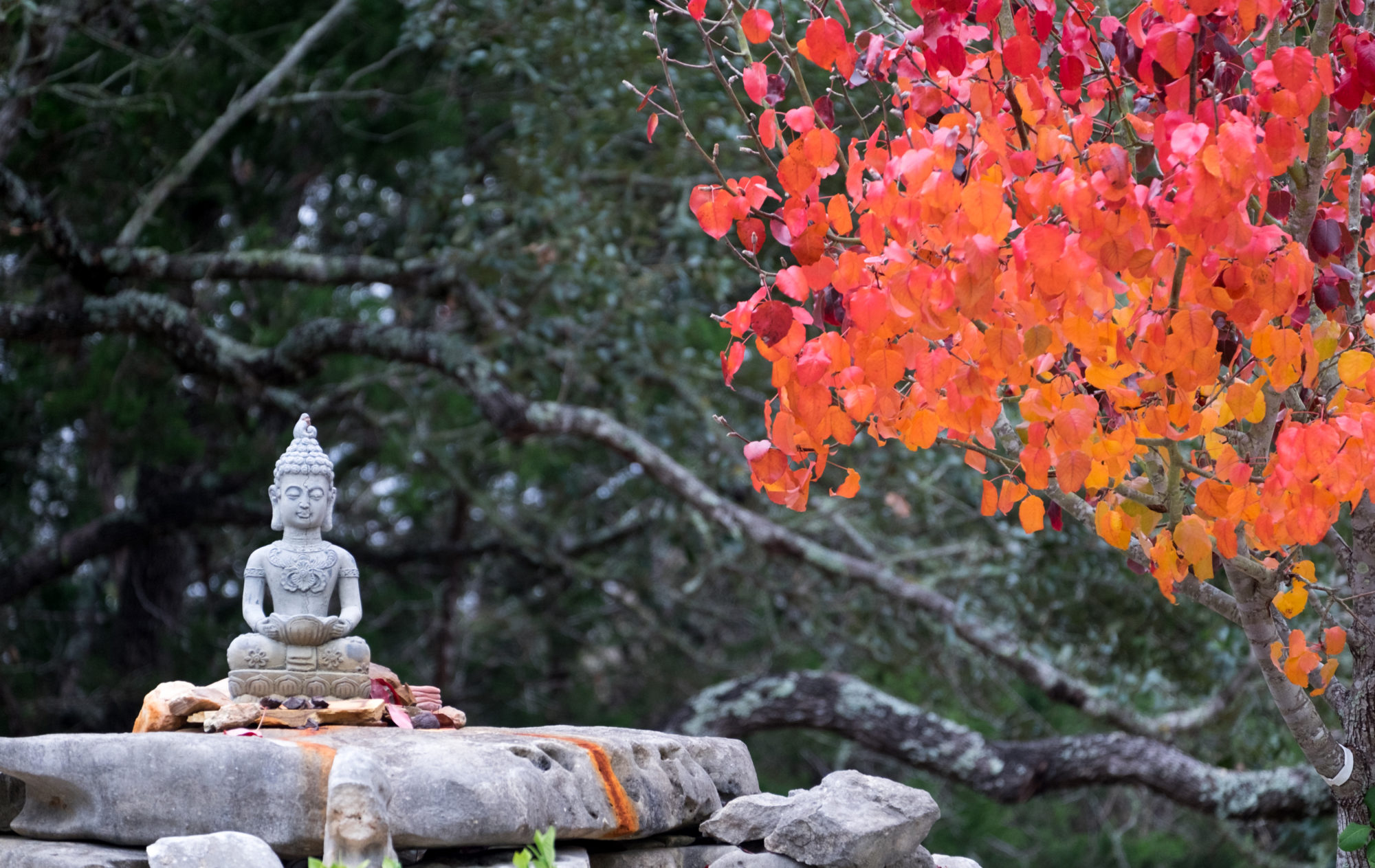Waking early in Levelland (I saw no UFOs) to deal with the flat tire, after a convenience store breakfast I was at the tire repair joint when it opened at 7:30. They said that their insurance would not allow them to work on a motorcycle tire, but they somewhat reluctantly gave me some air for the tire I had repaired the prior night. (Thanks, guys…) I was delighted to discover that the tire seemed to be holding air, so I headed over to the Walmart to buy a new compressor and another handful of tubeless tire repair stuff. I was then ready to head for the court house. Here’s the itinerary for today:

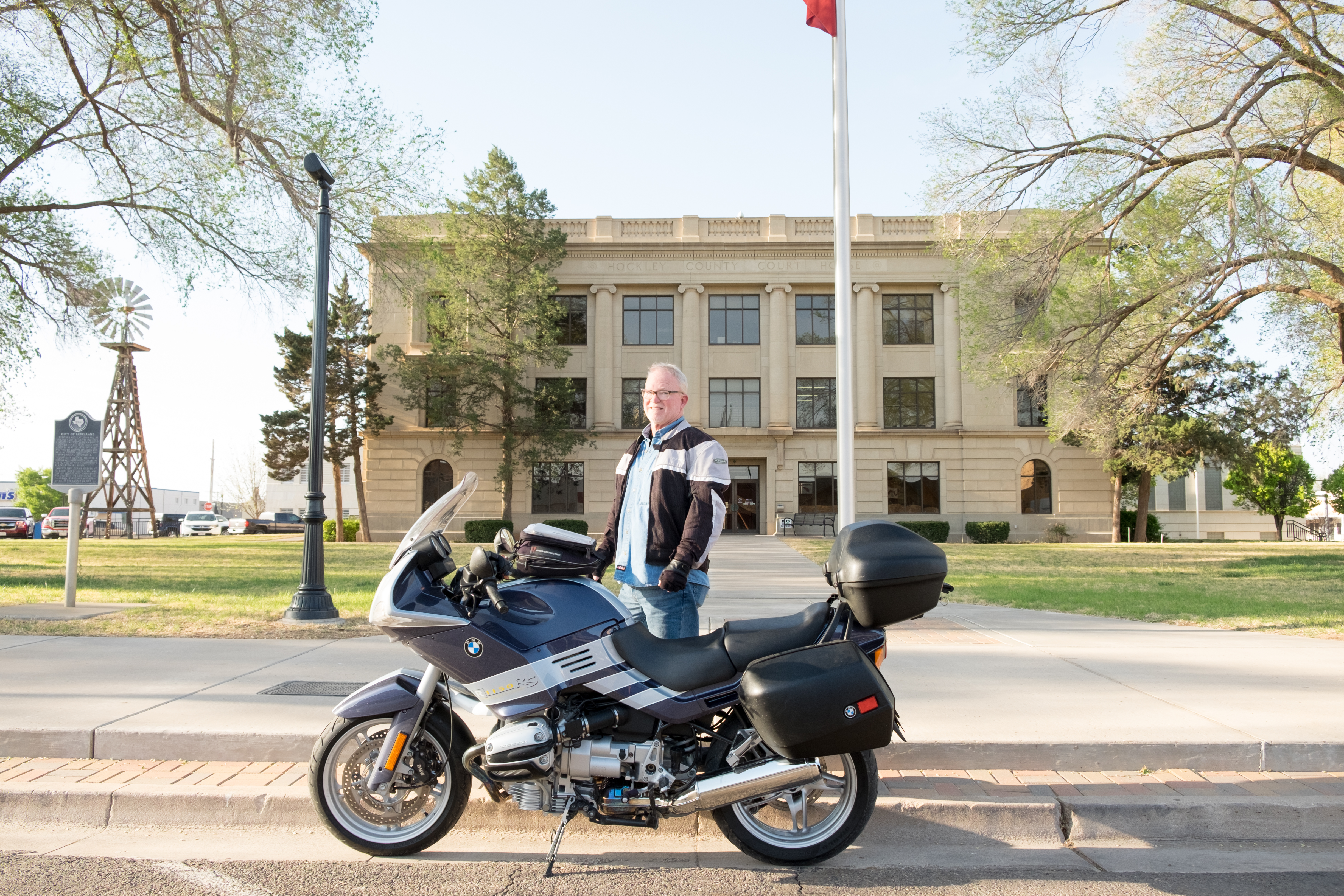
Levelland, it may be noted, is the birthplace of Ronny Jackson, who was the physican to Bush, Obama and Trump, also noteworthy for his failed candidacy to head up the Veteran’s Administration.
And on a glorious Llano Estacado morning, I set sail due north for Littlefield, seat of Lamb County, named for another of our distinguished Confederate forebears. I saw this unusual sight while northbound:
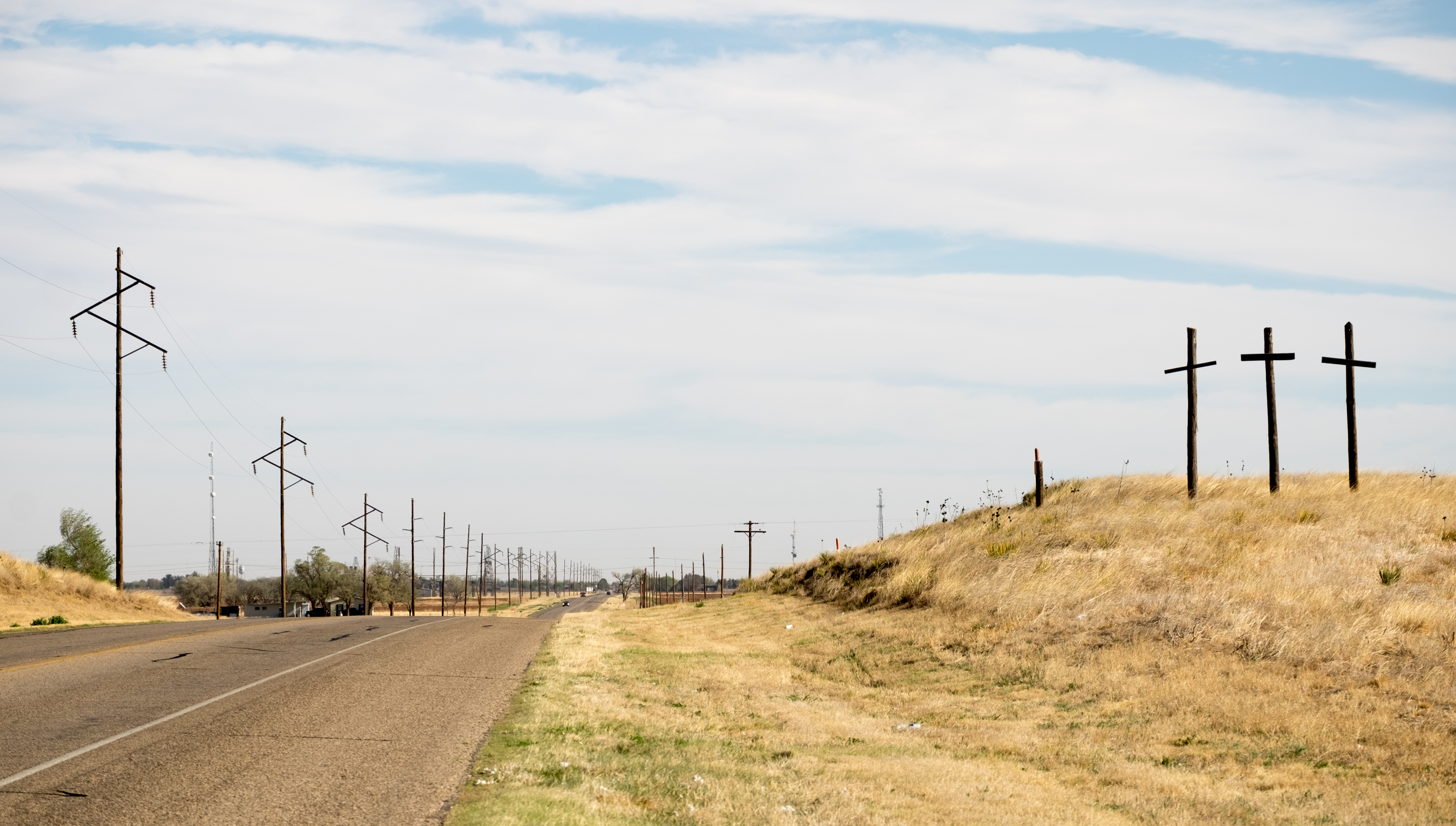
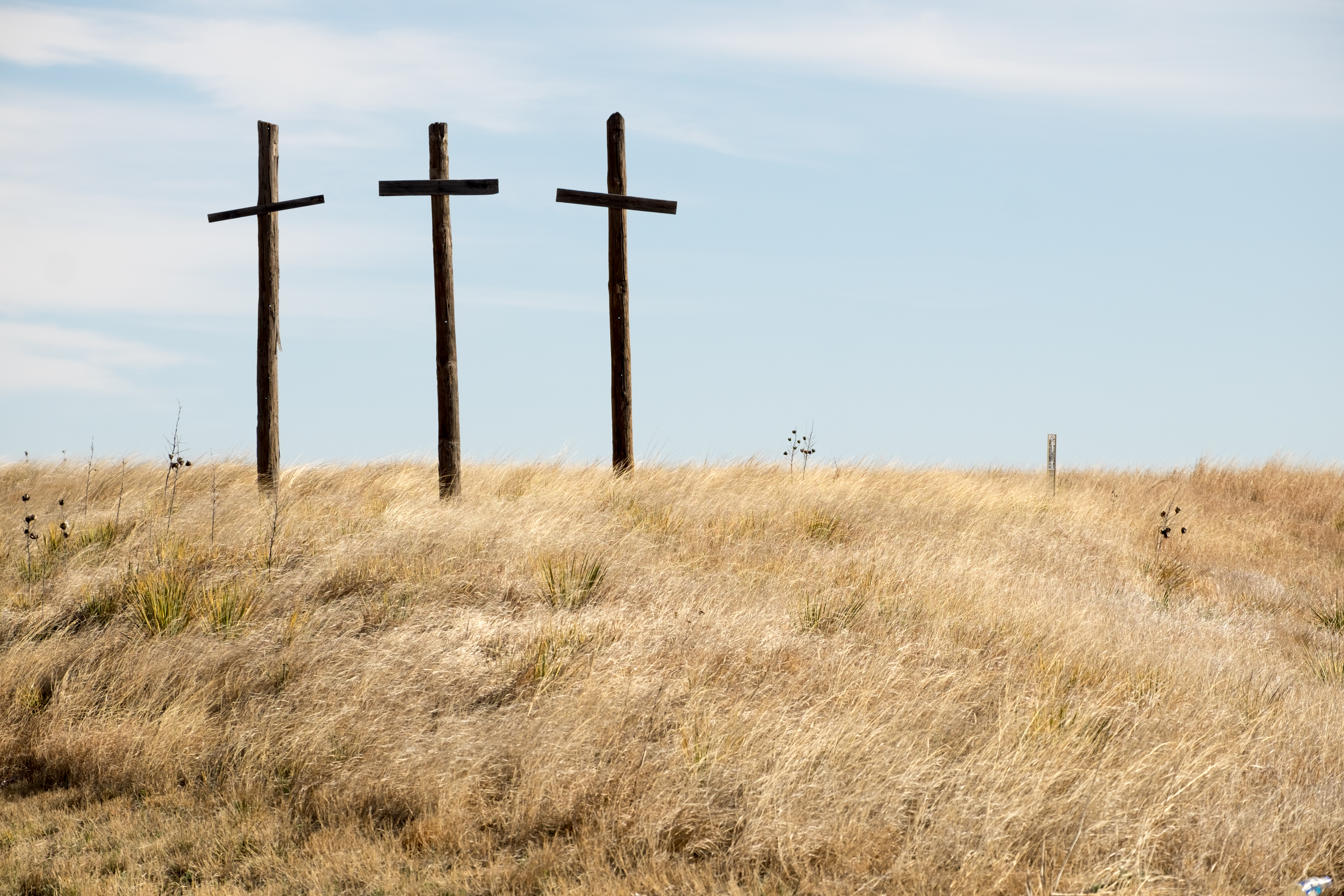
So I’m a little excited going in to Littlefield – my tire hasn’t gone flat yet, Littlefield will be my 100th county seat, and I’ve realized that Littlefield is the hometown of Waylon Jennings, legend of outlaw country music and frequent flyer compatriot of Willie Nelson, himself no stranger to extremes, either.
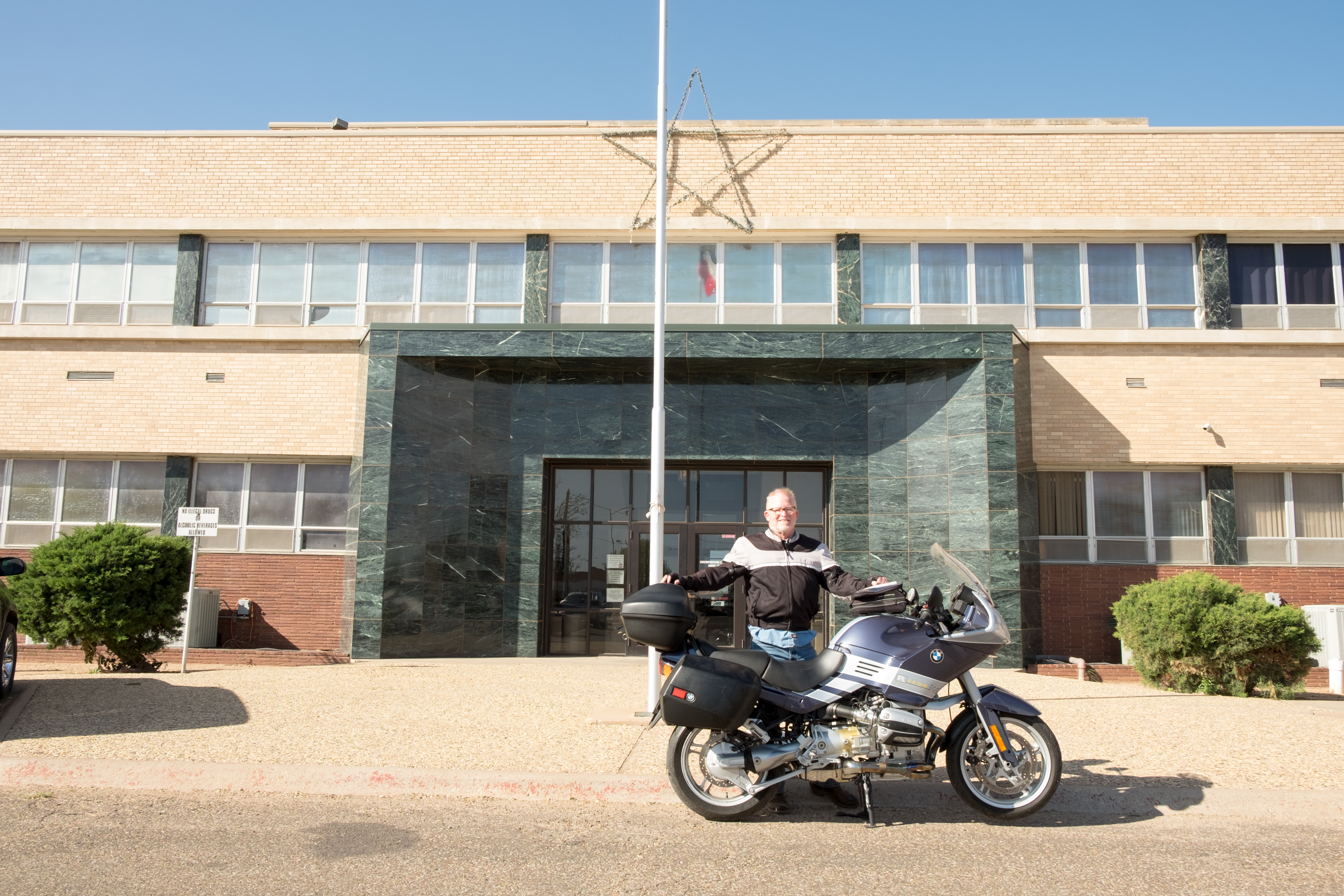
A cop tells me that there’s a Waylon Jennings Avenue (I was on it), and that there’s a museum that doubles as a convenience and liquor store. I had seen it on the way in, but couldn’t find it a second time (these Panhandle metropoli are hard to navigate early in the morning). But here’s Littlefield:
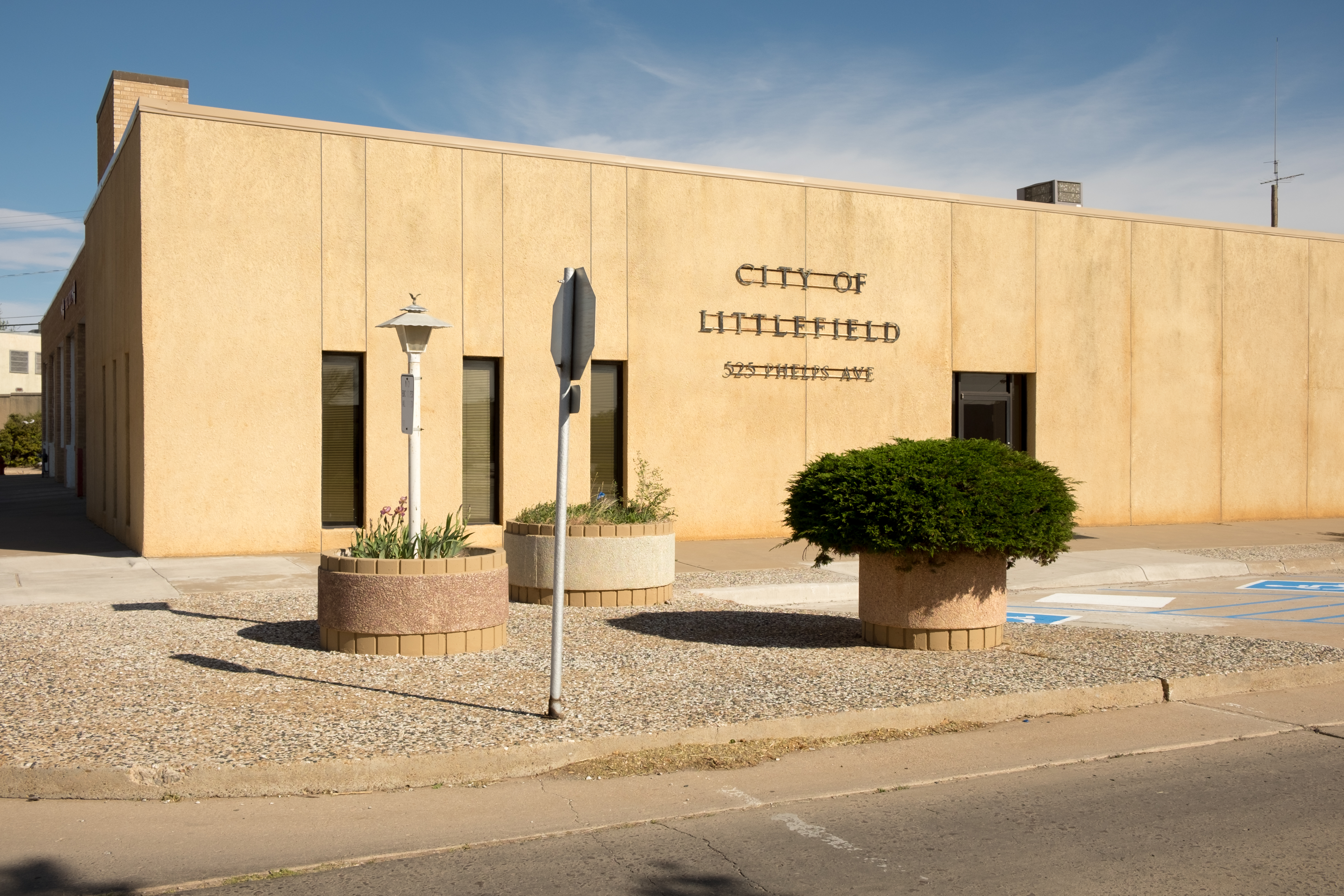
My uncle used to build mini-storage warehouses that looked exactly like this.
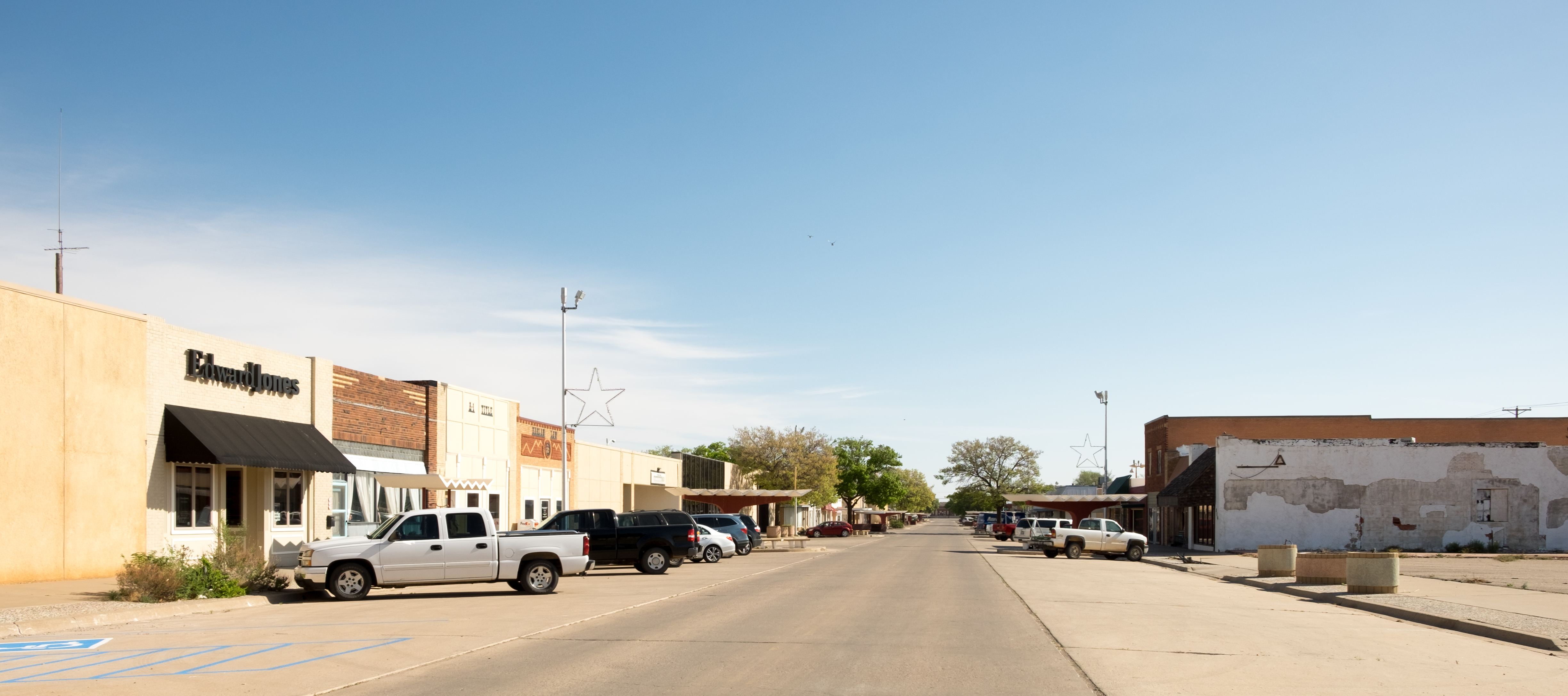
I have to admit, while there was nothing objectionable about Littlefield, I could easily imagine being driven to a life of excess and extreme (like Waylon) if I had had to grow up in this little town on these immense and immensely flat plains. I’m sure David Byrne would have gotten it:
You start a conversation you can't even finish it You're talking a lot, but you're not saying anything When I have nothing to say, my lips are sealed Say something once, why say it again? Psycho Killer Qu'est-ce que c'est?
Emboldened by the fact that I still had air in my rear tire, and optimistic that if I were going to have to get a new tire or something my next stop would be the only feasible place to do it, I turned the Beemer to the south, Lubbock-bound.
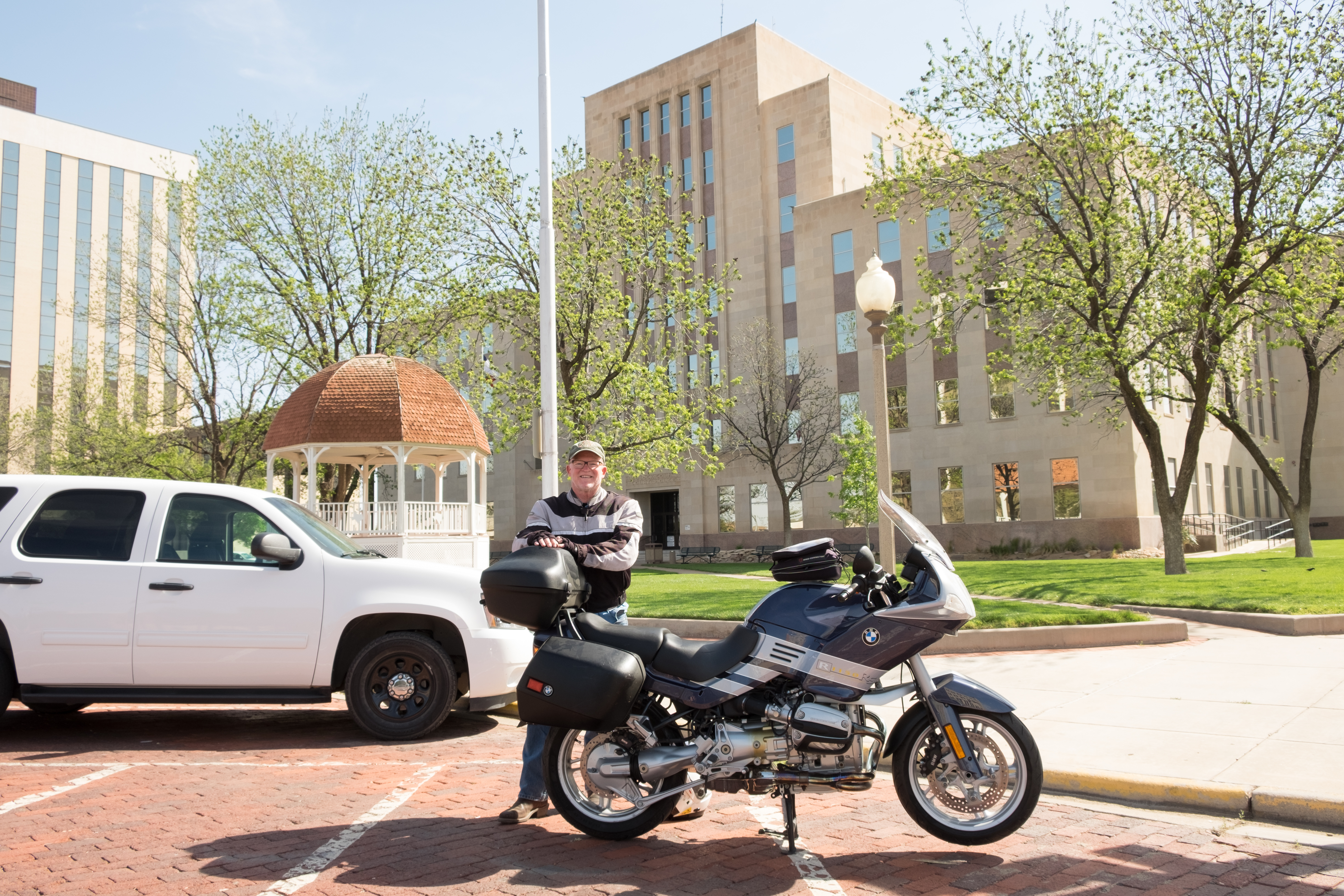
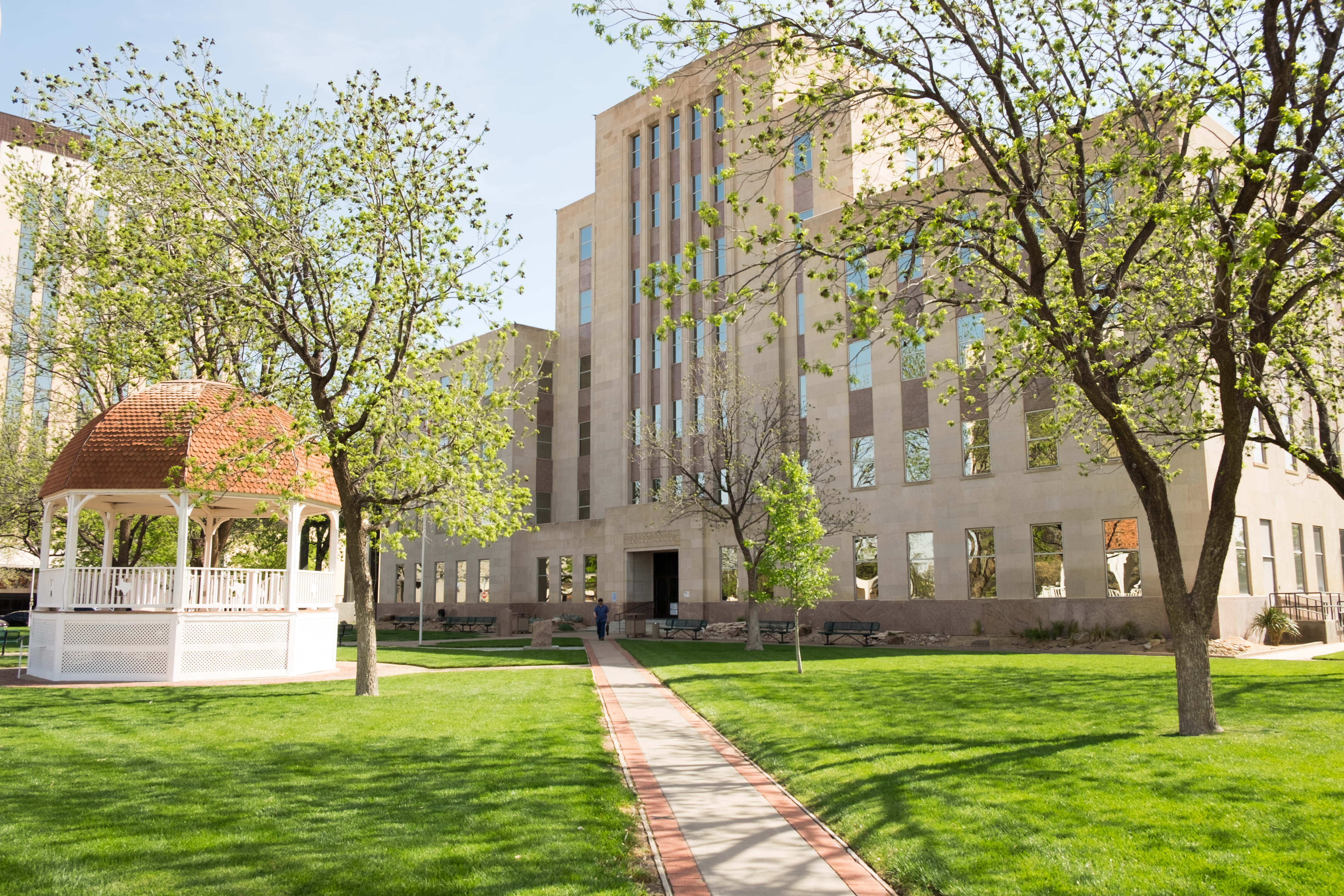
Lubbock is home to Texas Tech University, where my niece just completed her freshman year. I was pleasantly surprised by Lubbock, it is a nice, smallish university town out on the vast and endless plains – you could fight off the Psycho Killer impulses for an above-average period from here – but they’d still get you in the end… Lubbock is the birthplace of Buddy Holly, Delbert McClinton, Butch Hancock, Joe Ely, Jimmie Dale Gilmore, and Lloyd Maines, whom I photographed two days ago with Terri Hendrix! Looks like Lubbock is a good place to be…from.
Breathing a sigh of relief that I had successfully (meaning no law enforcement engagement) completed the most urban stop on this trip, I fumbled around until I found the southwest exit from Lubbock toward the romantically-named next stop, Brownfield, seat of Terry County.
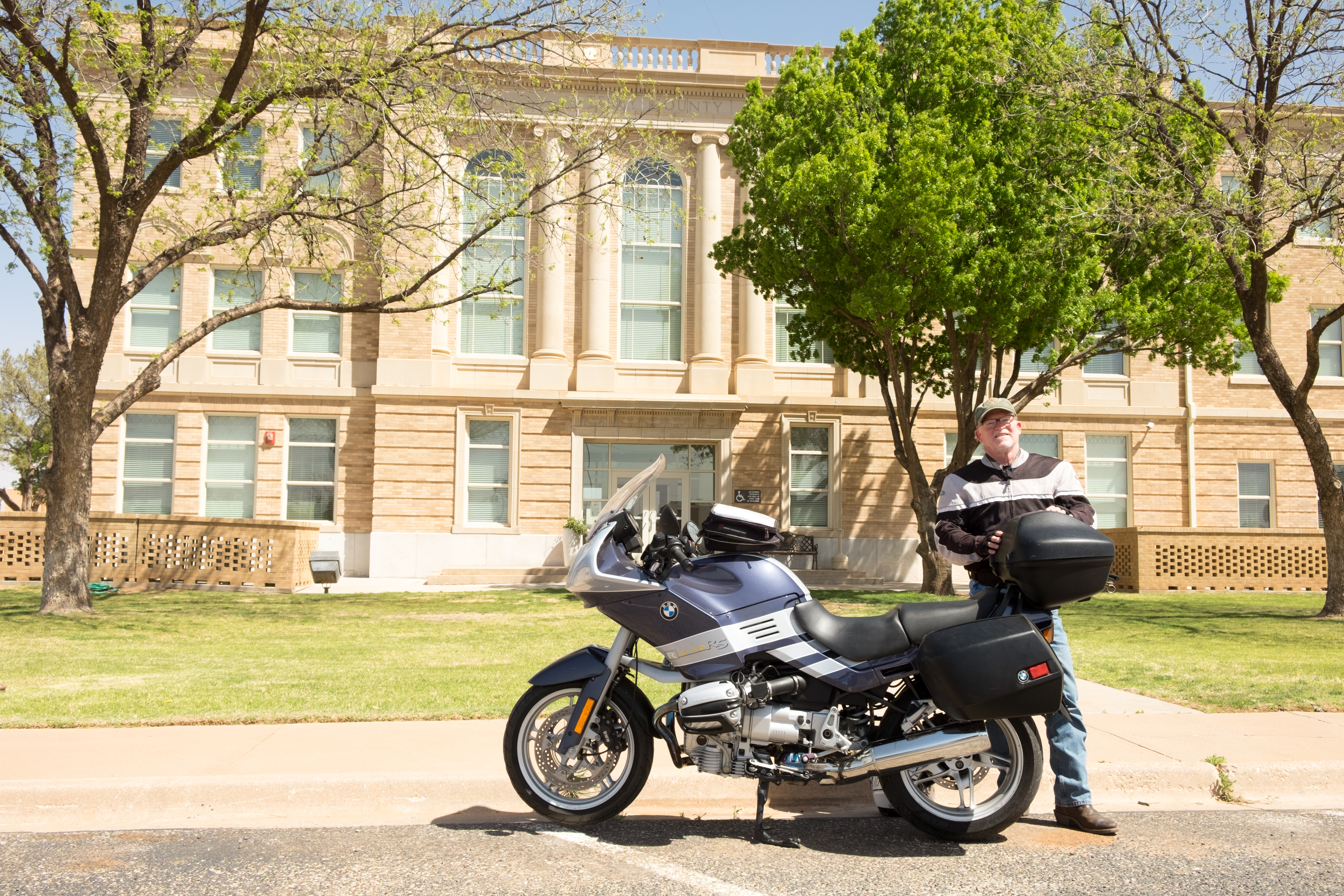
Continuing the David Byrne train of thought, I discovered after I was here that Brownfield has some distinctive characteristics: Double the national murder rate; double the national teen pregnancy rate; triple the national rape rate; bottom 20% of safest cities in Texas.
On the positive side, however, Wikipedia notes that “The most notable geographic feature of Brownfield remains its red soil.”. Also – I confess I did not see this, otherwise I’d surely have photographed it – the city has a mural at the post office called “Ranchers of the Panhandle Fighting Prairie Fire with Skinned Steer”. Here’s what Google shows of it:
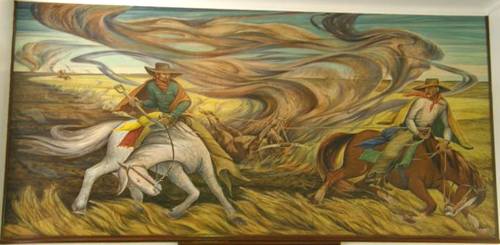
I guess they had two ropes attached to the skinned steer and raced around the fire dragging the carcass. You won’t see this kind of art up there in that New Yawk City! Eat your hearts out!
Also, Brownfield seems to be world HQ for the card game I have heard of, but never played, since my childhood – Skip-Bo:
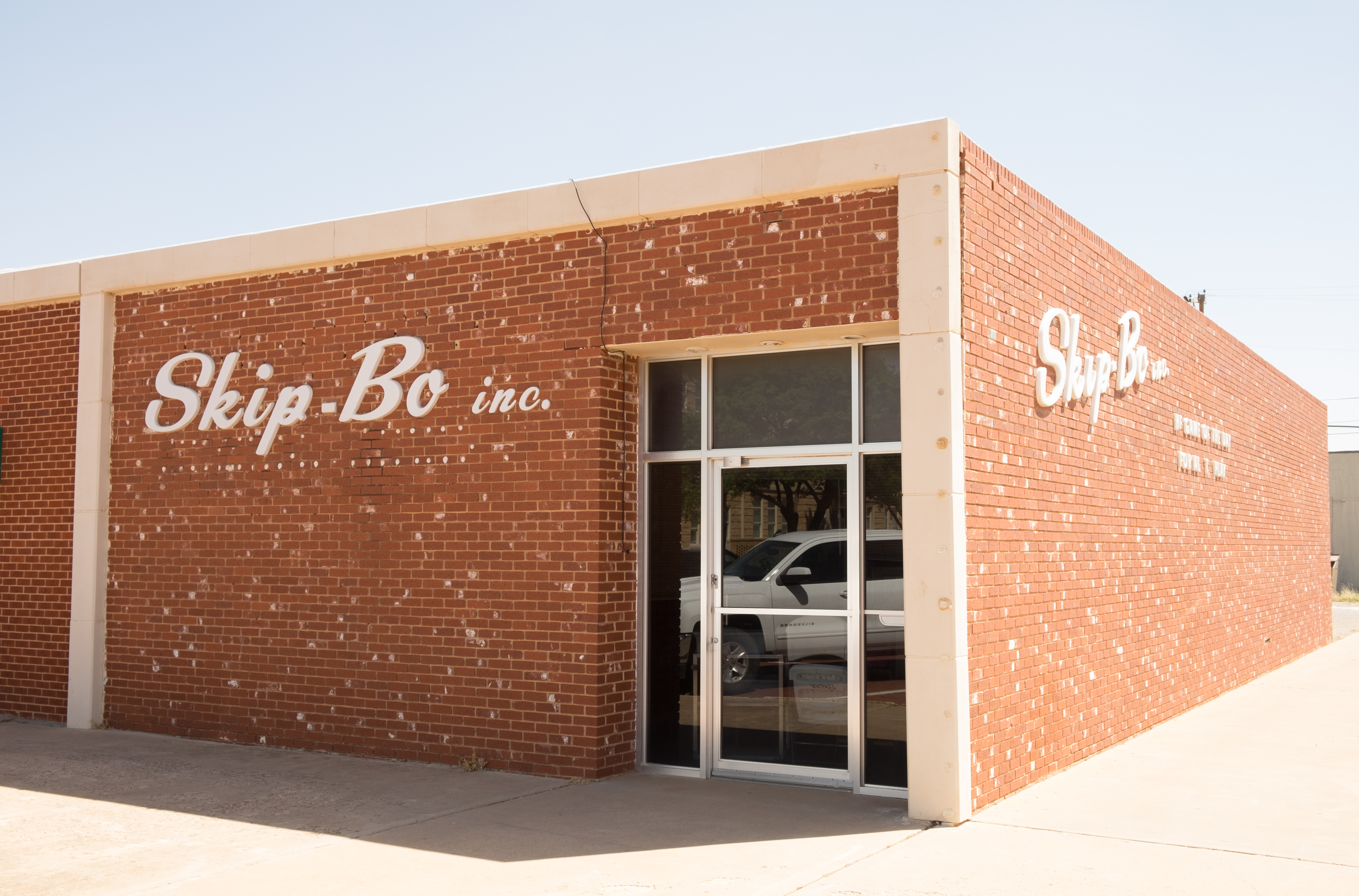
Getting out of Brownfield before I added something to the statistical tally, next stop was due east to Tahoka, seat of Lynn County.
Along the way, grape vineyards:
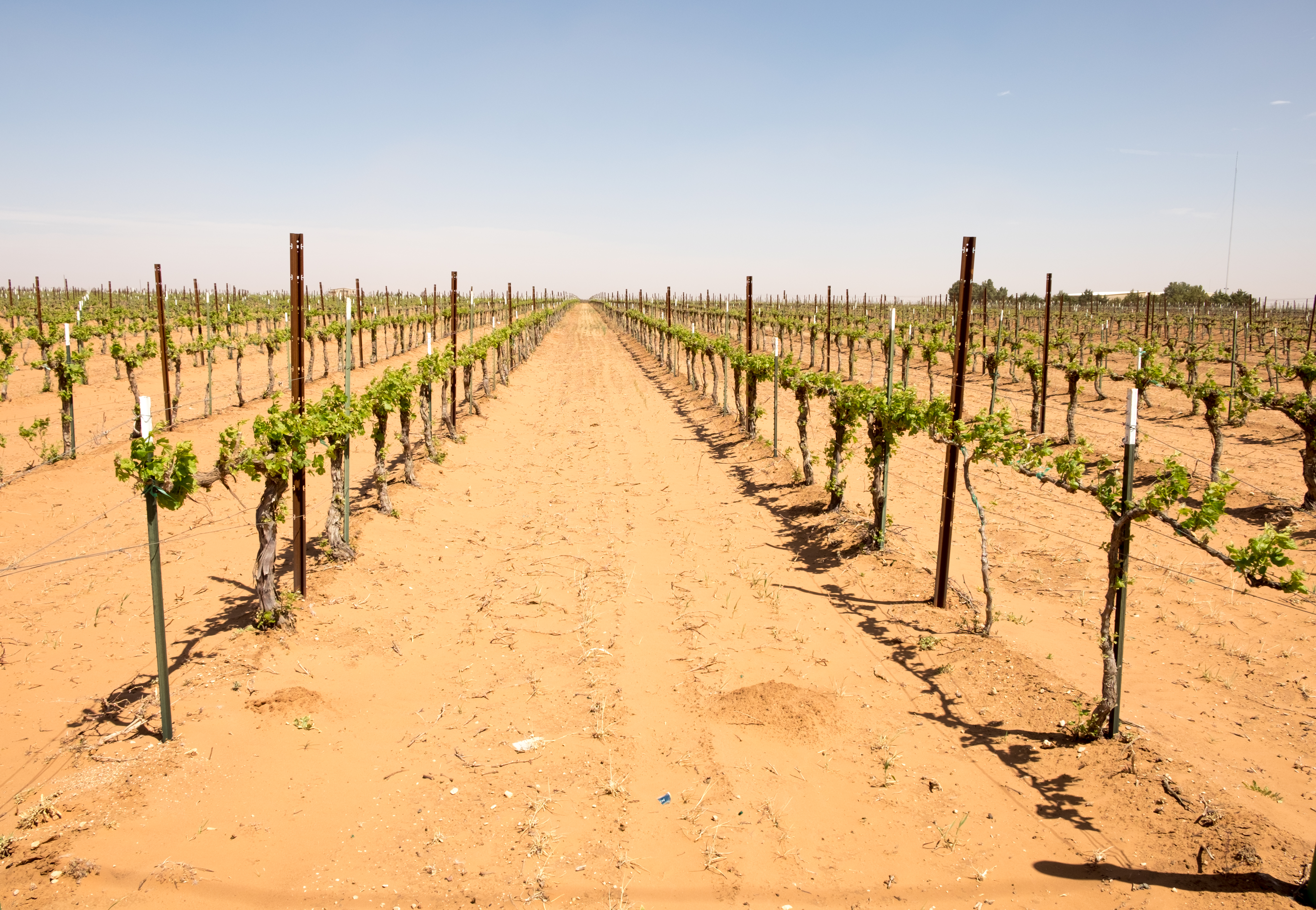
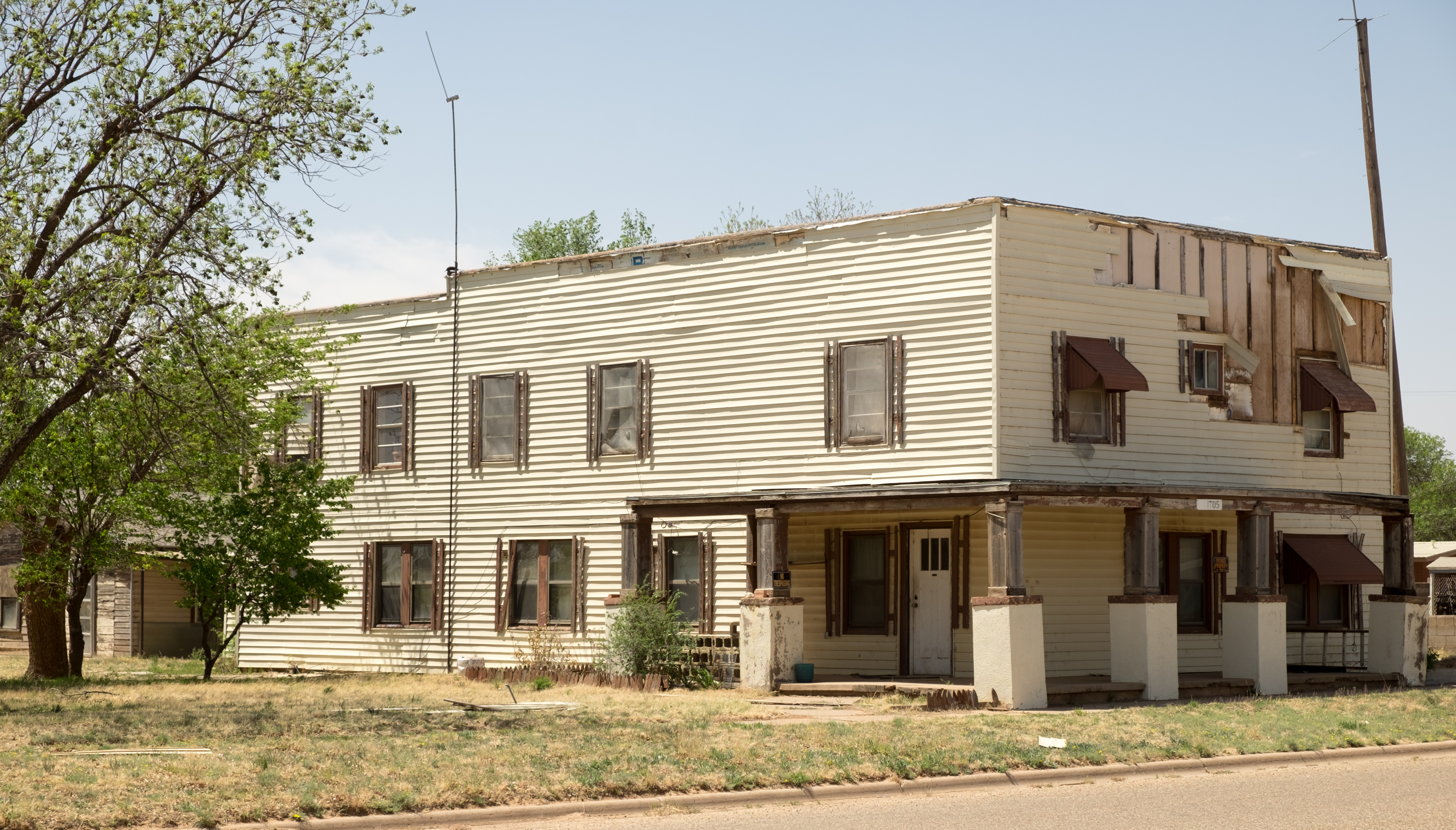
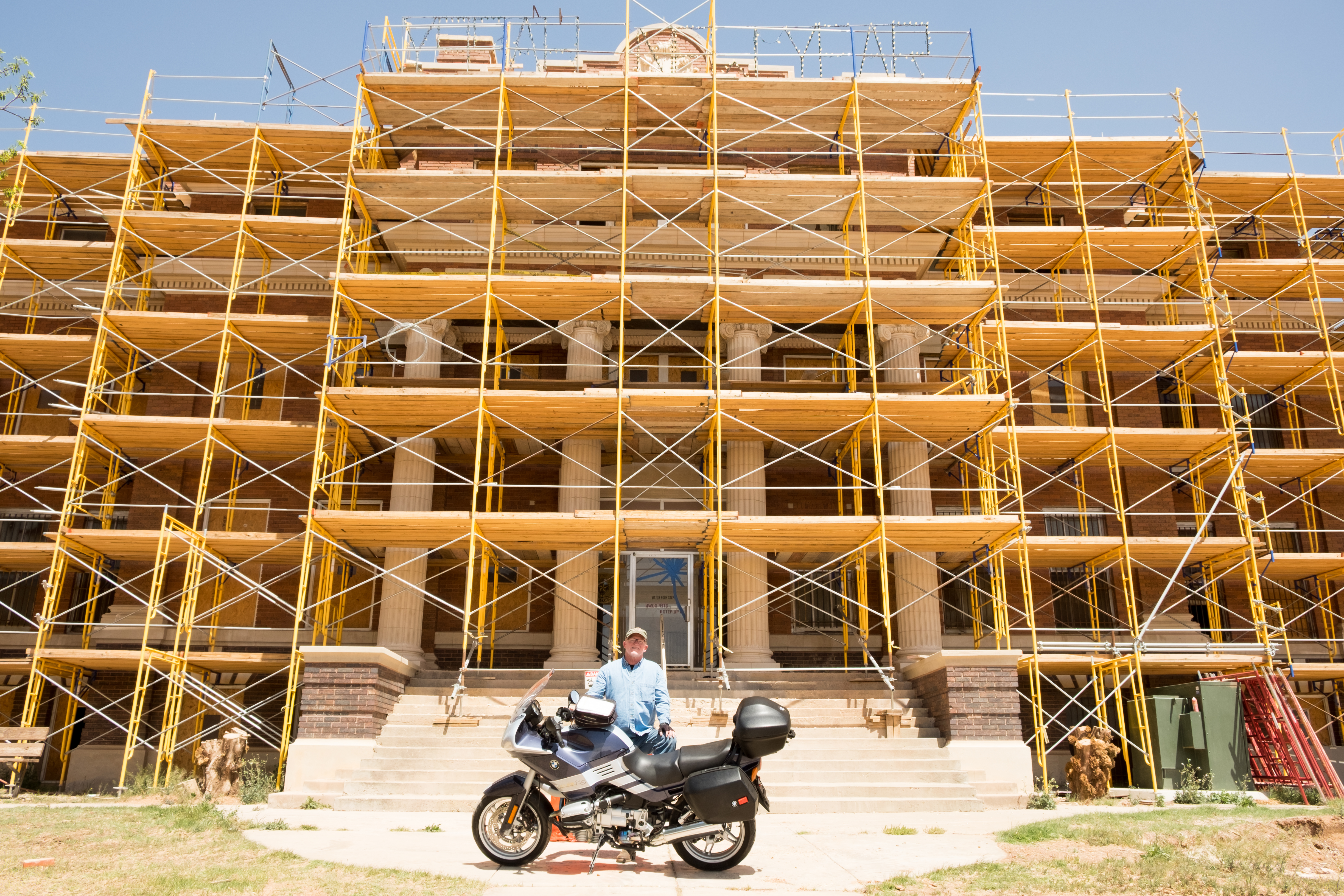
Tahoka’s court house is another being renovated, though how the cost of renovation could be justified to serve a widely scattered population of less than 6,000 is a mystery to me.
Tahoka purportedly means “fresh water” in one of the Native American languages – probably Apache, Comanche, or Kiowa – who prevailed in this area. This was one of the centers of buffalo hunting until the buffalo were decimated and the Indians along with them. In this area a group of soldiers and buffalo hunters, chasing Comanche raiders in the month of July, ran out of water and five of them died. There’s a great link to the tale here:
Buffalo Soldier Tragedy of 1877
From Tahoka, turning south to Lamesa, seat of Dawson County. I was advised by the County Attorney, whom I met at the courthouse while trying to figure out which side of the courthouse was the front (he also was not sure, even though he worked there!), that you can differentiate between natives and visitors by how the pronounce the name of the town. Locals call it “Lameesa”, with a long “e”, while visitors use the (obvious) Spanish pronunciation of “La Mesa”, with a long “a”. I would have used the local pronunciation, but I had already given myself away by having asked the question (not to mention wandering around cluelessly in motorcycle garb).
The Dawson County courthouse is one of the strangest ones yet encountered. There are entrances on at least 3 sides, possibly 4, and each side has a strange painted tile mural above the door. The large trees around it provide lots of (needed) shade, but obscure the building. It actually looks more like a Montessori school than a courthouse.
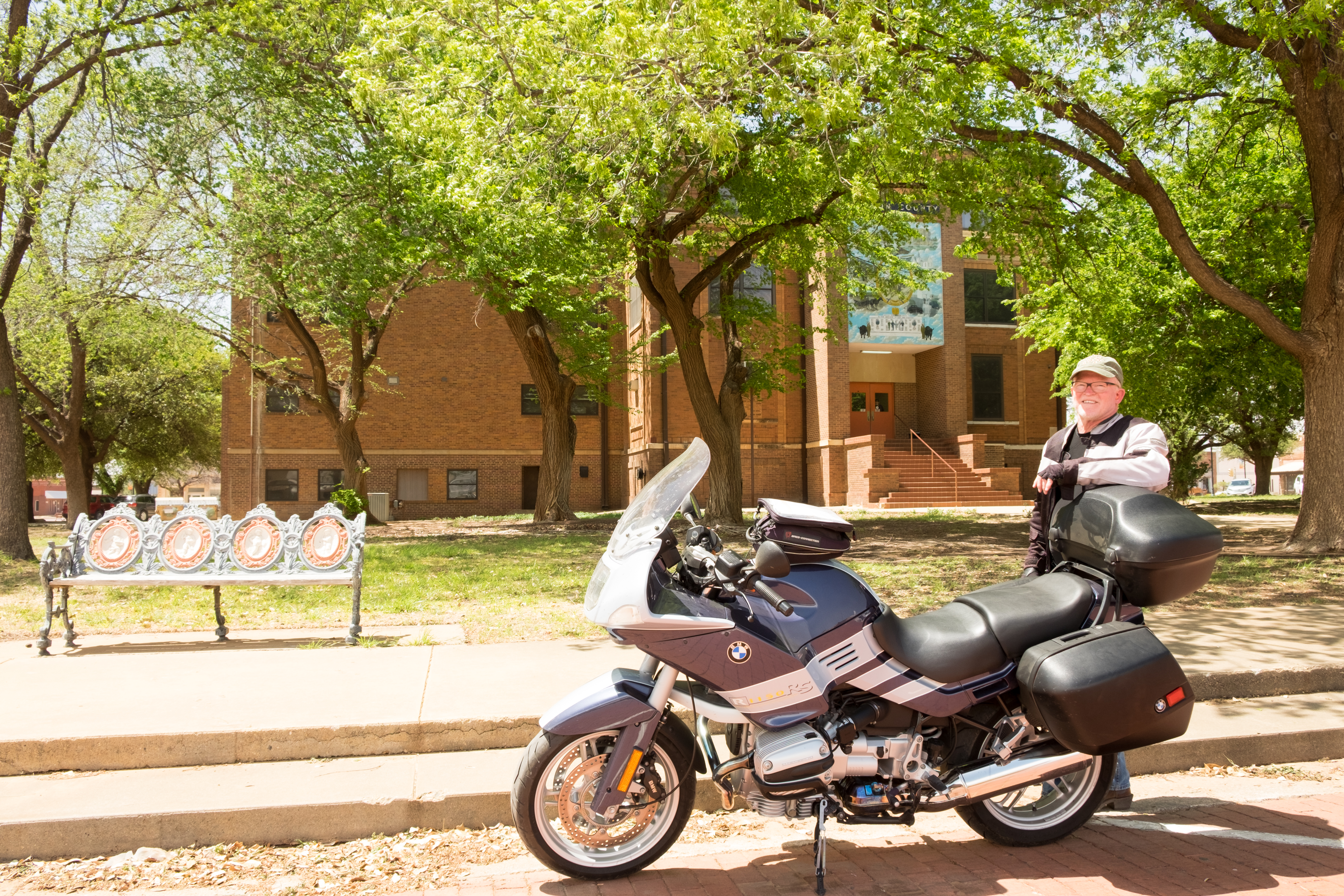
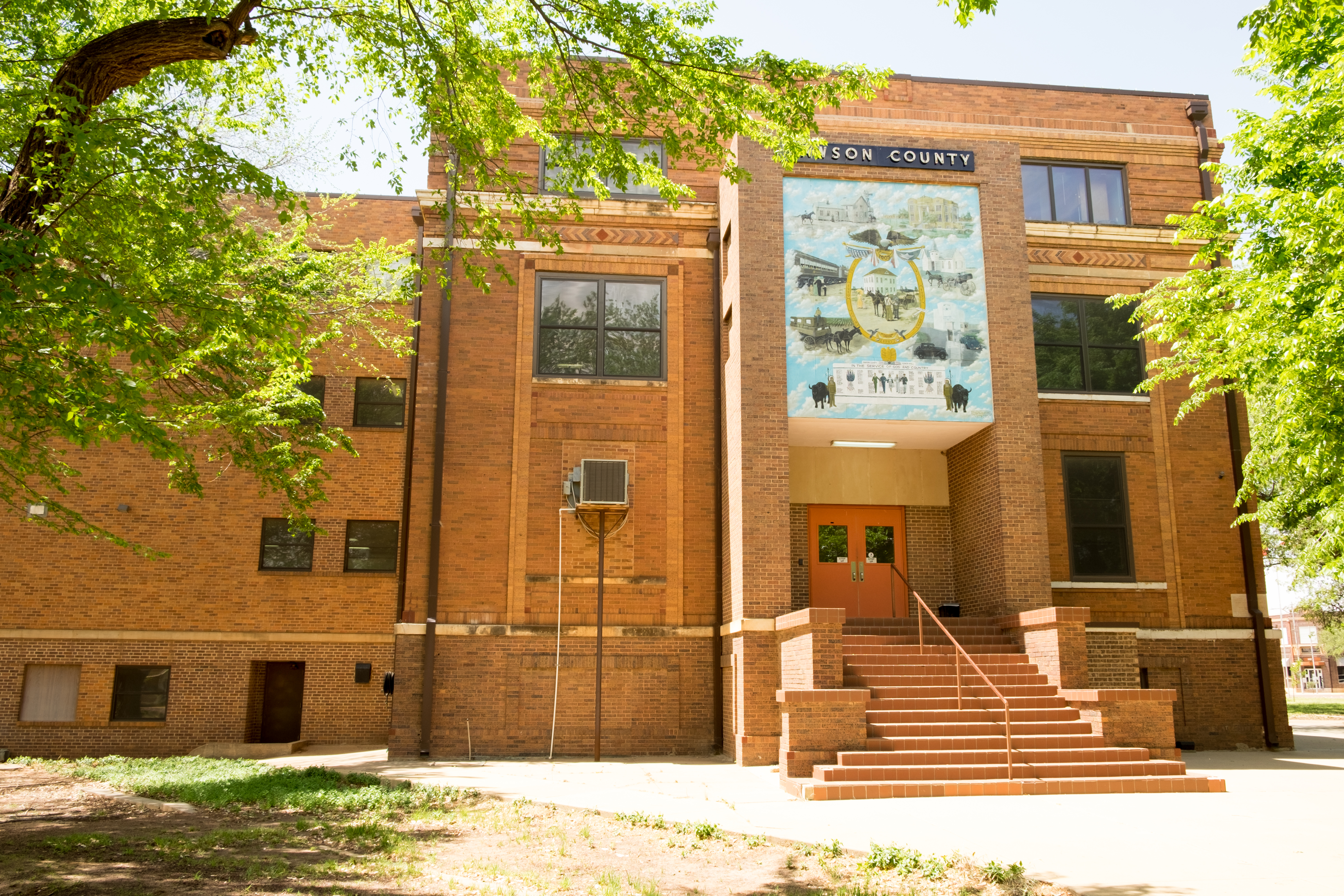
Note to designer – if your murals require a telescope to be able to make out what is being represented, they probably aren’t scaled or designed right. But there are some interesting sights in town:
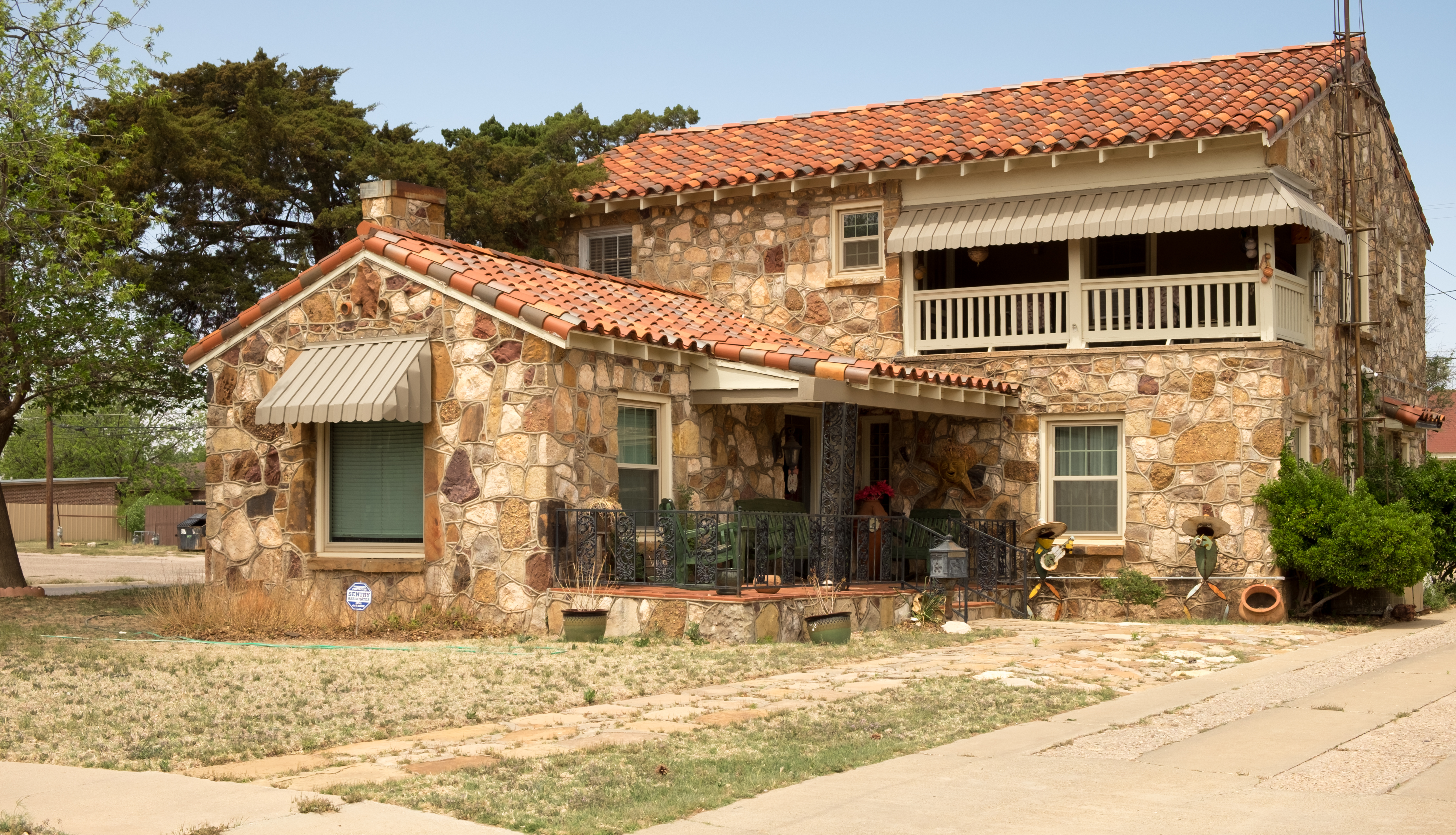
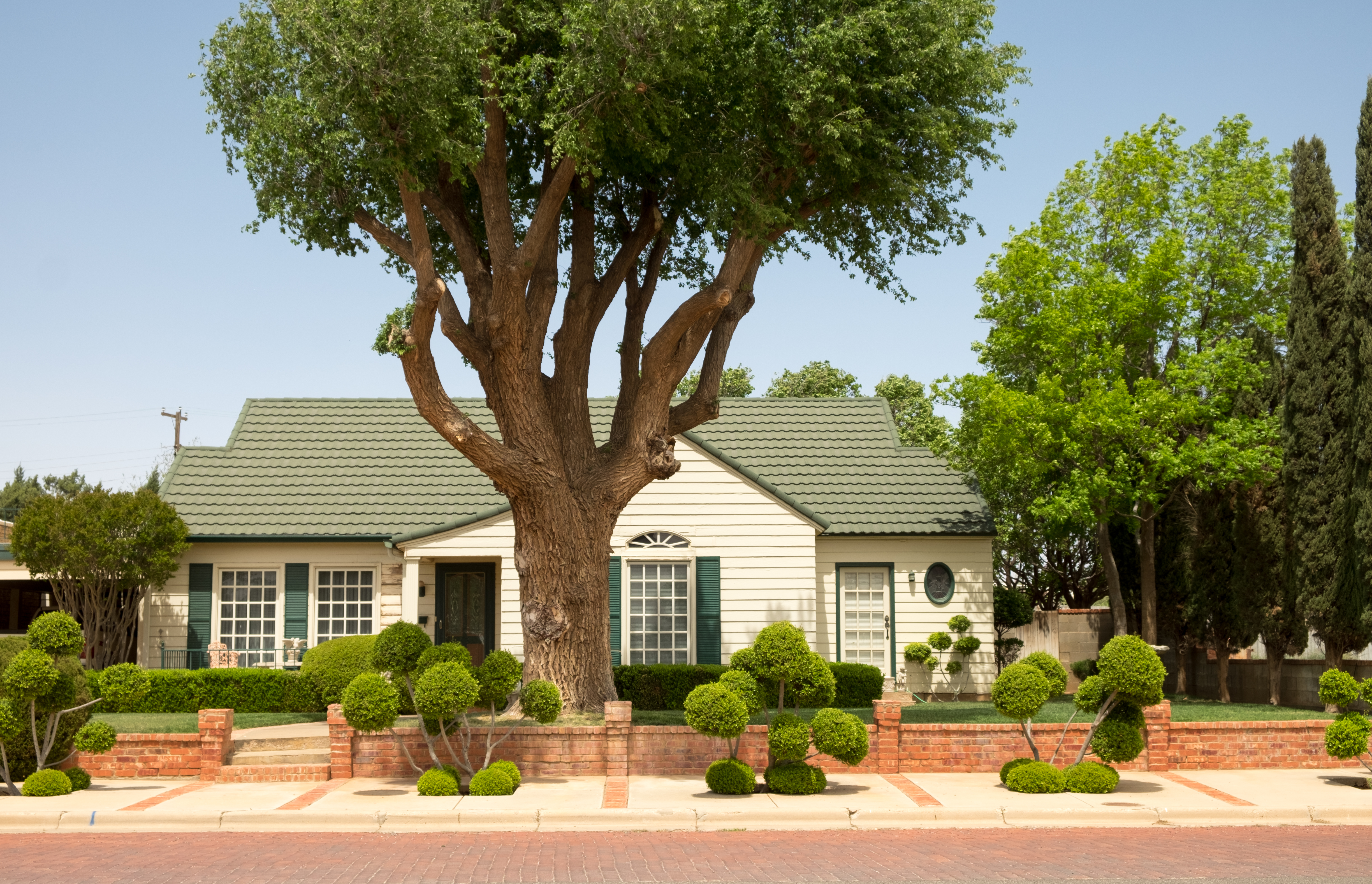
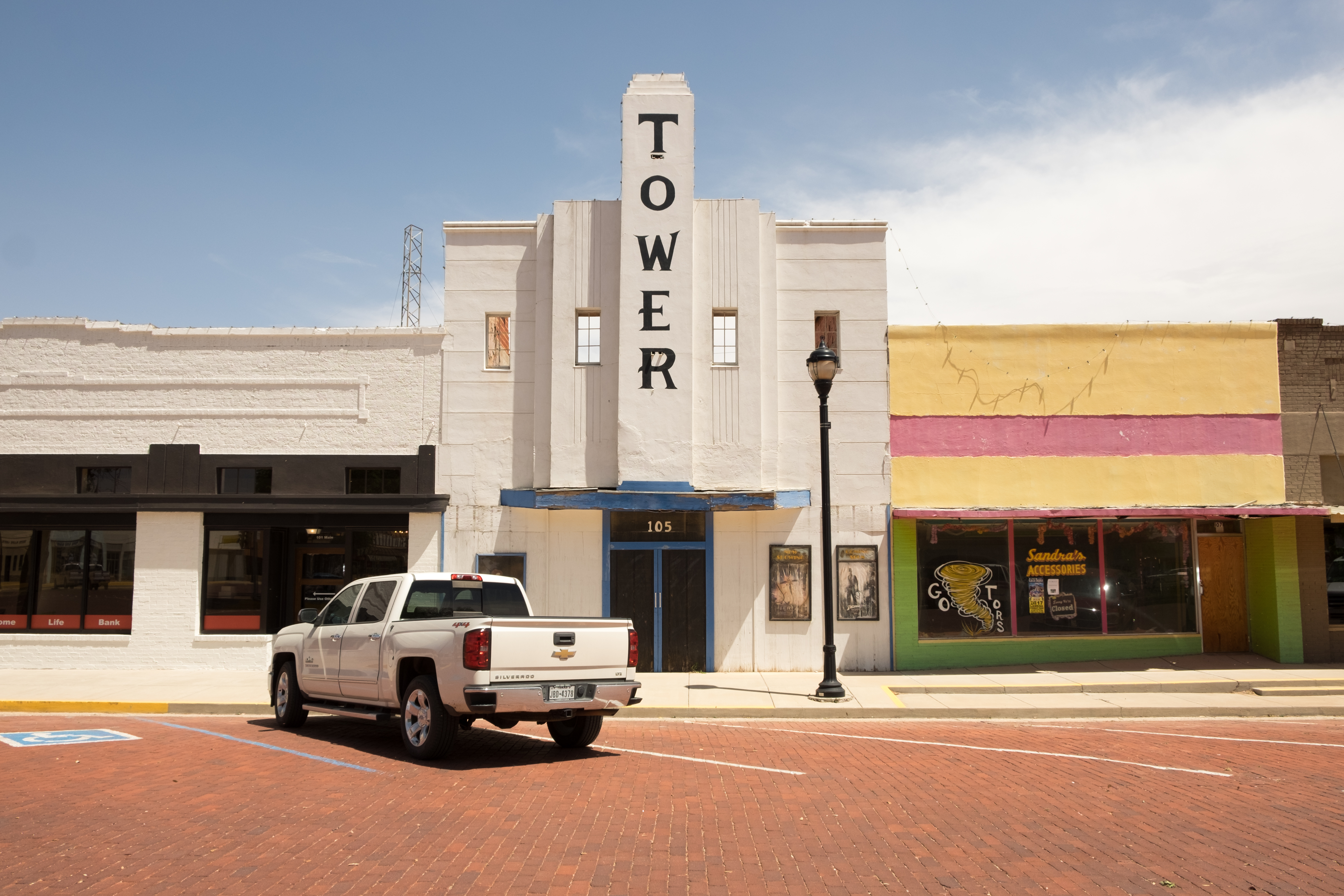
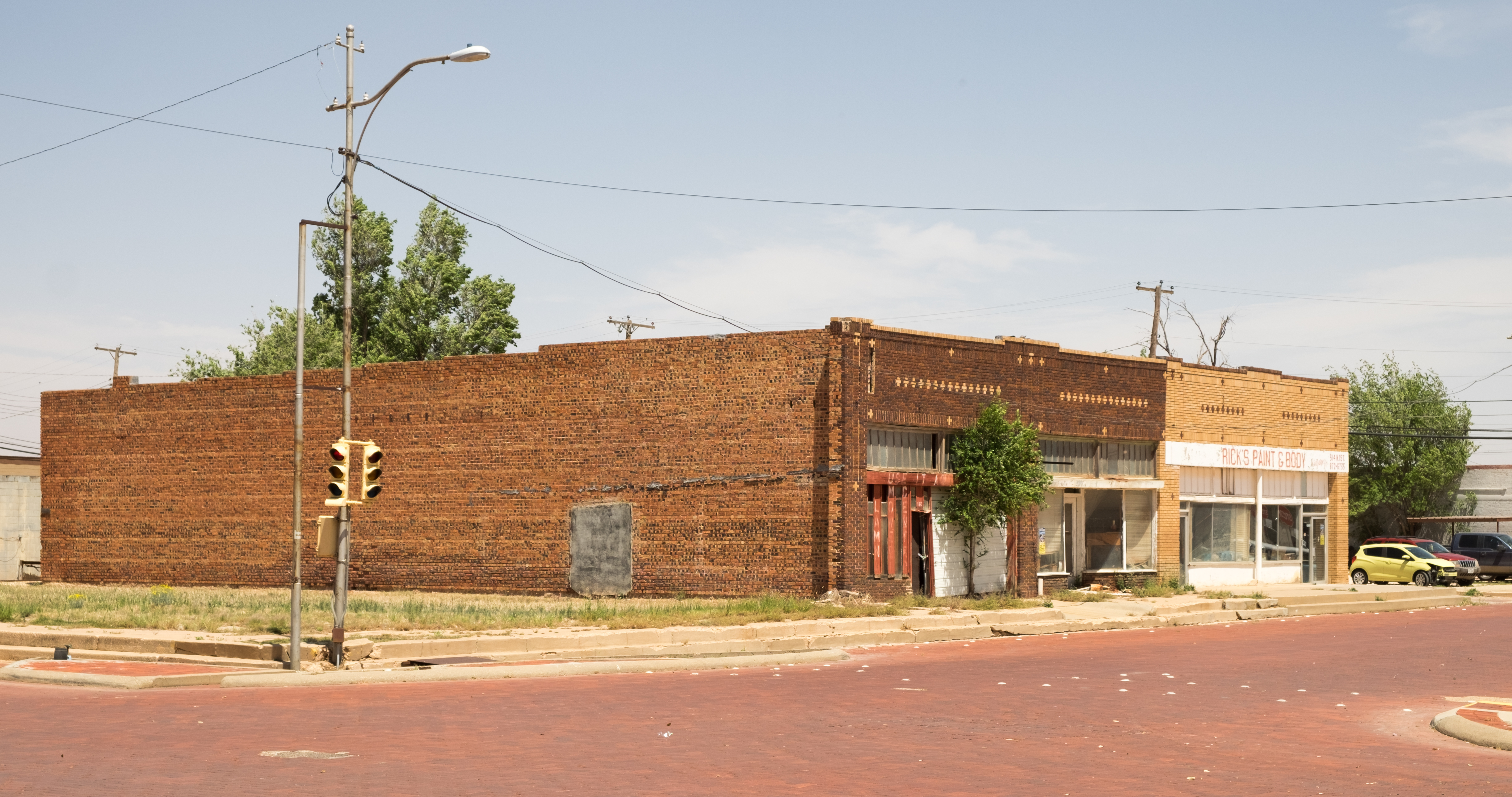
South from Lamesa down what is probably the most dreadful ride of the 254 County adventure – to Stanton, seat of Martin County. Here’s what the road looked like when it was clear enough for me to stop the bike, prop it up, protect the camera from the howling soil, and shoot a picture:
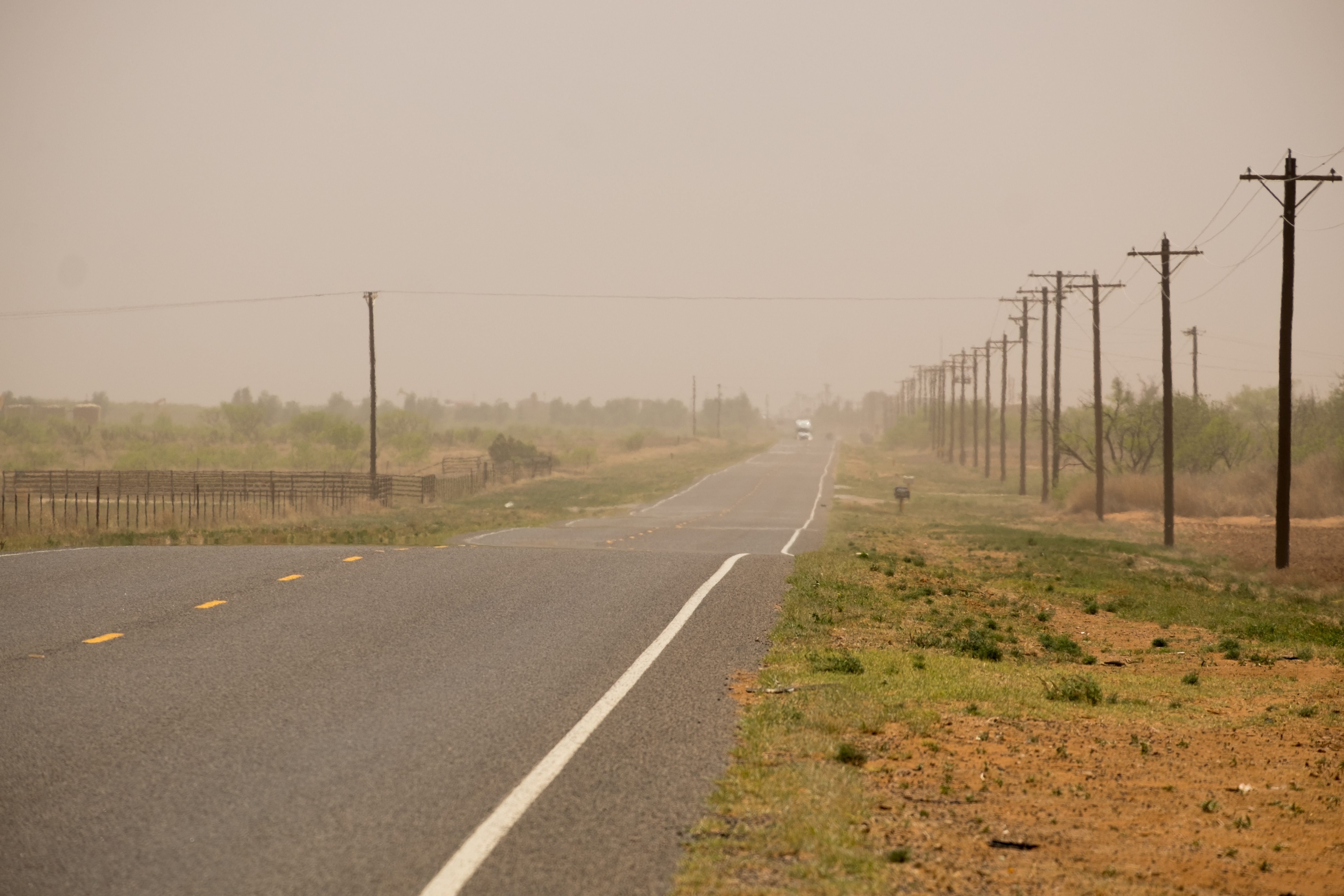
Most of the 45 mile ride to Stanton was much worse (in terms of wind and wind-blown dirt) than this, with the added attraction of oncoming truck traffic. Sometimes you could see the pumping heads:
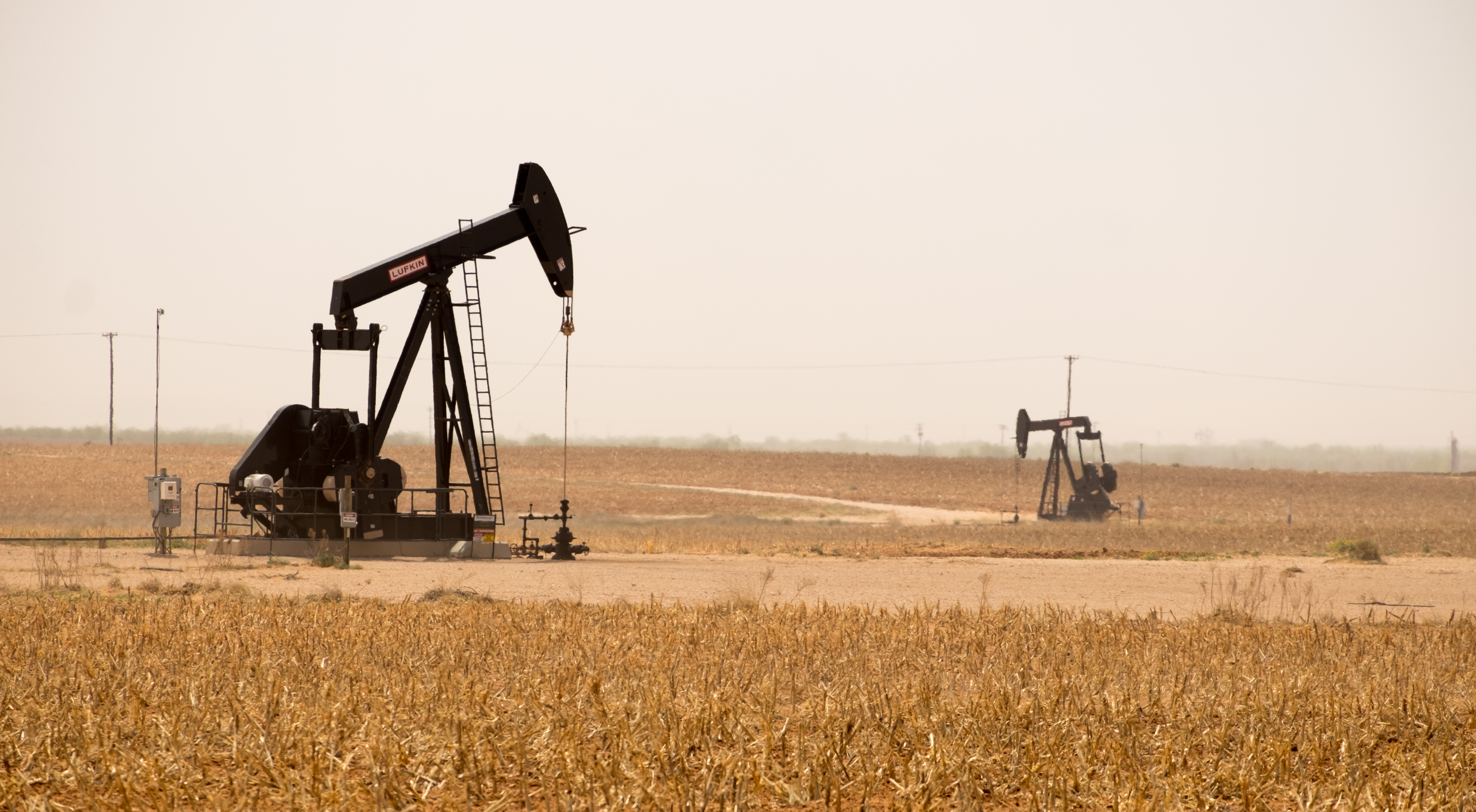
I arrived, filthy, in Stanton and got this picture for my trouble:
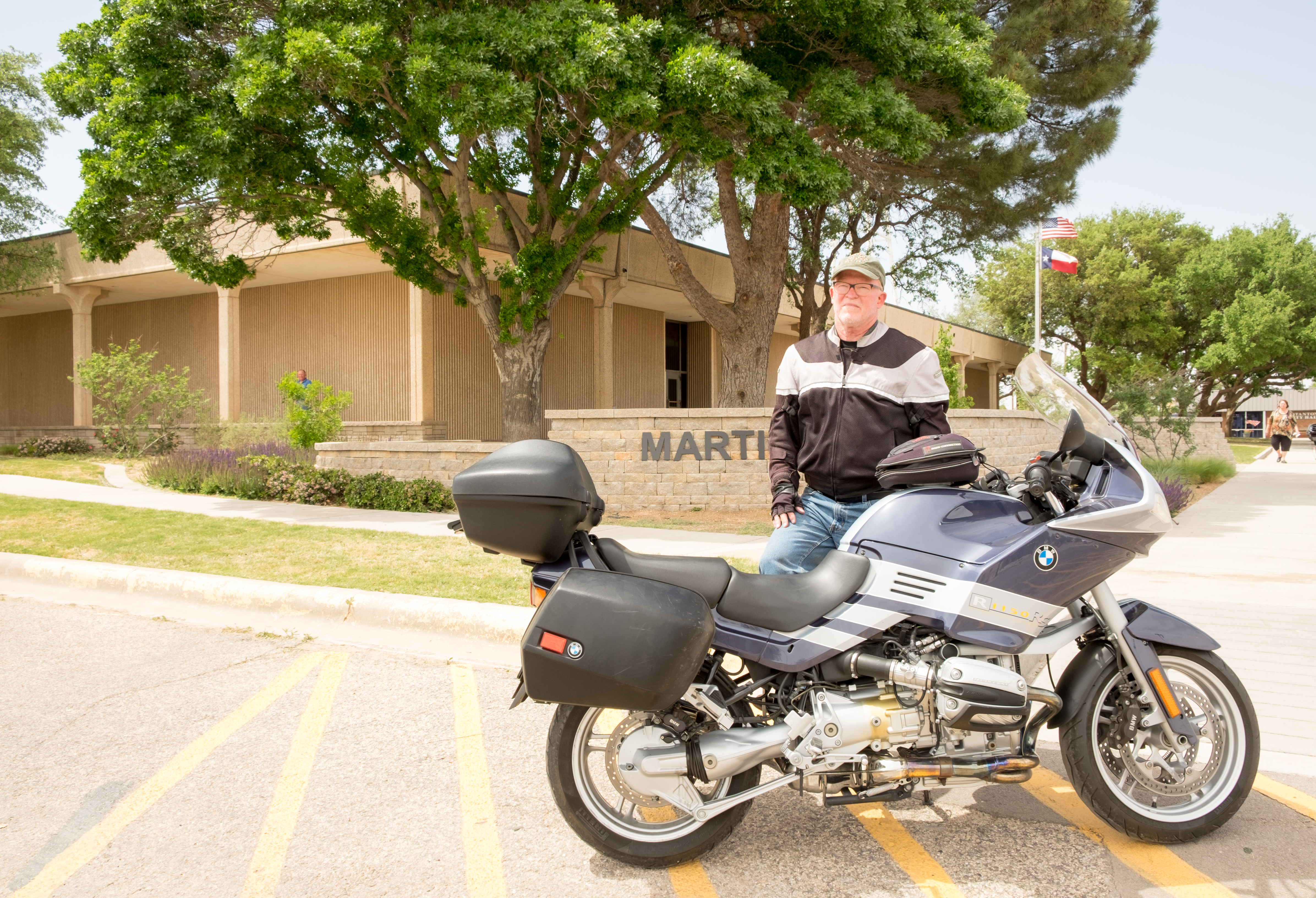
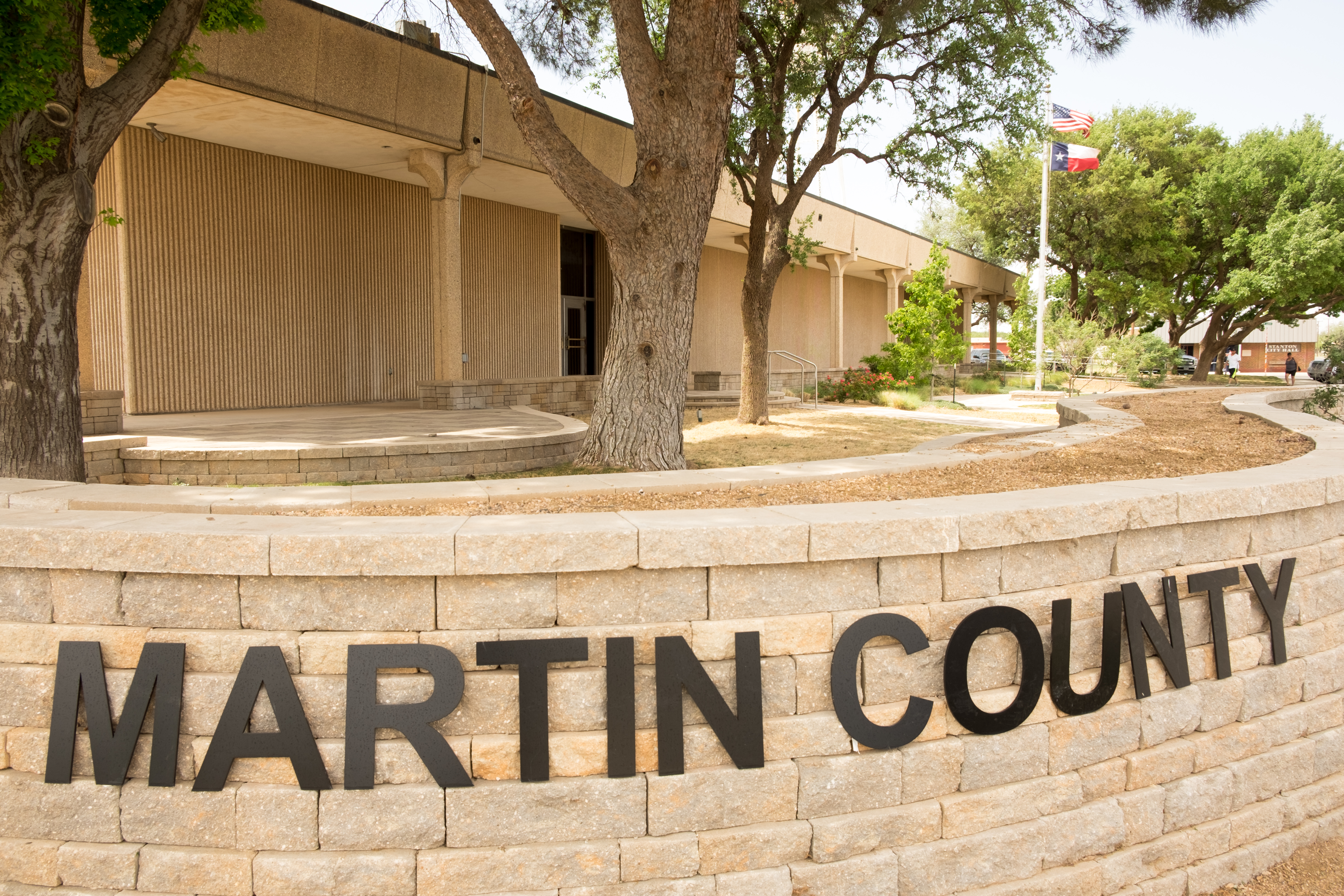
Stanton did have, however, its own mural:
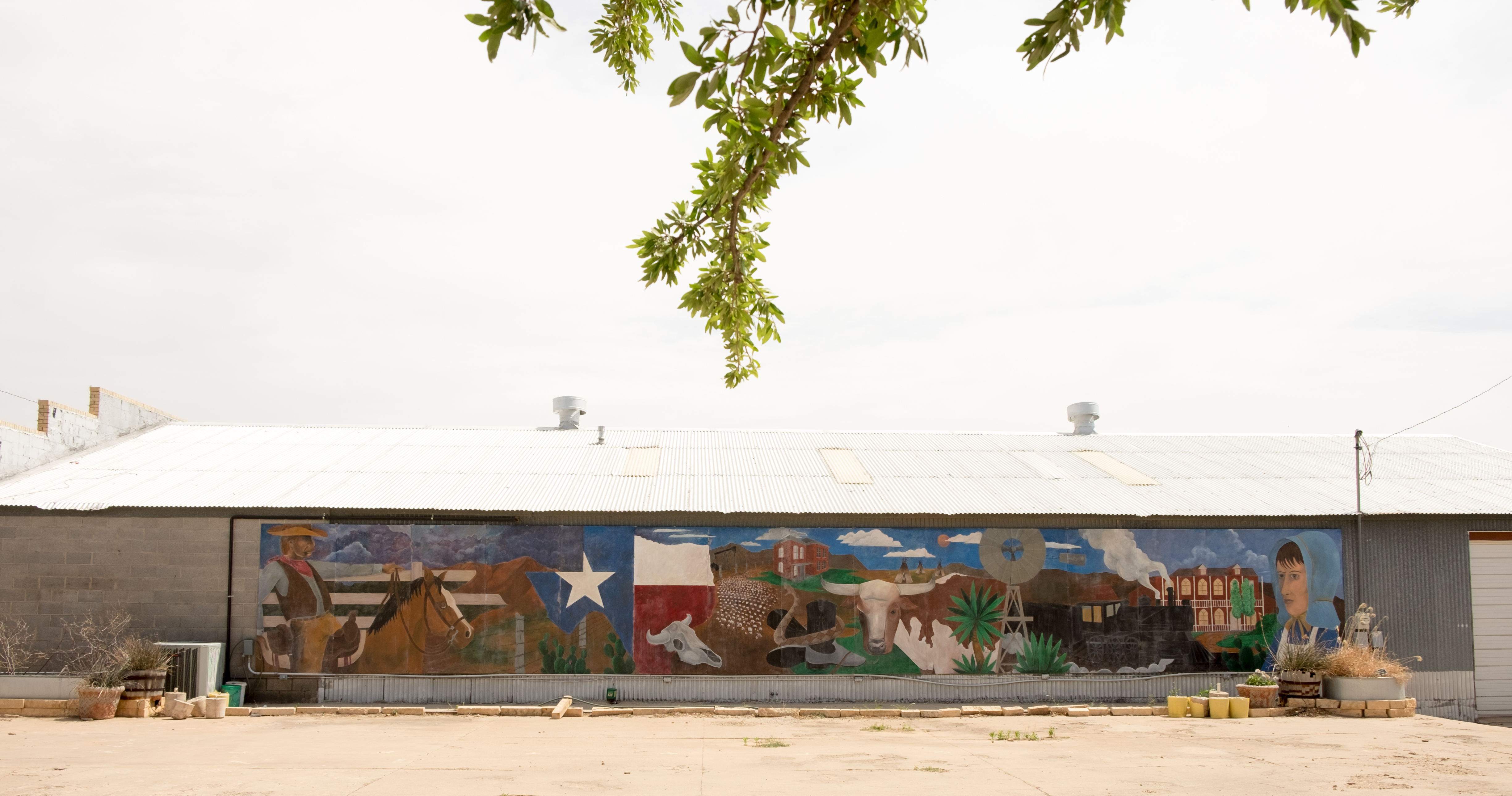
…and a kind of cute downtown area:

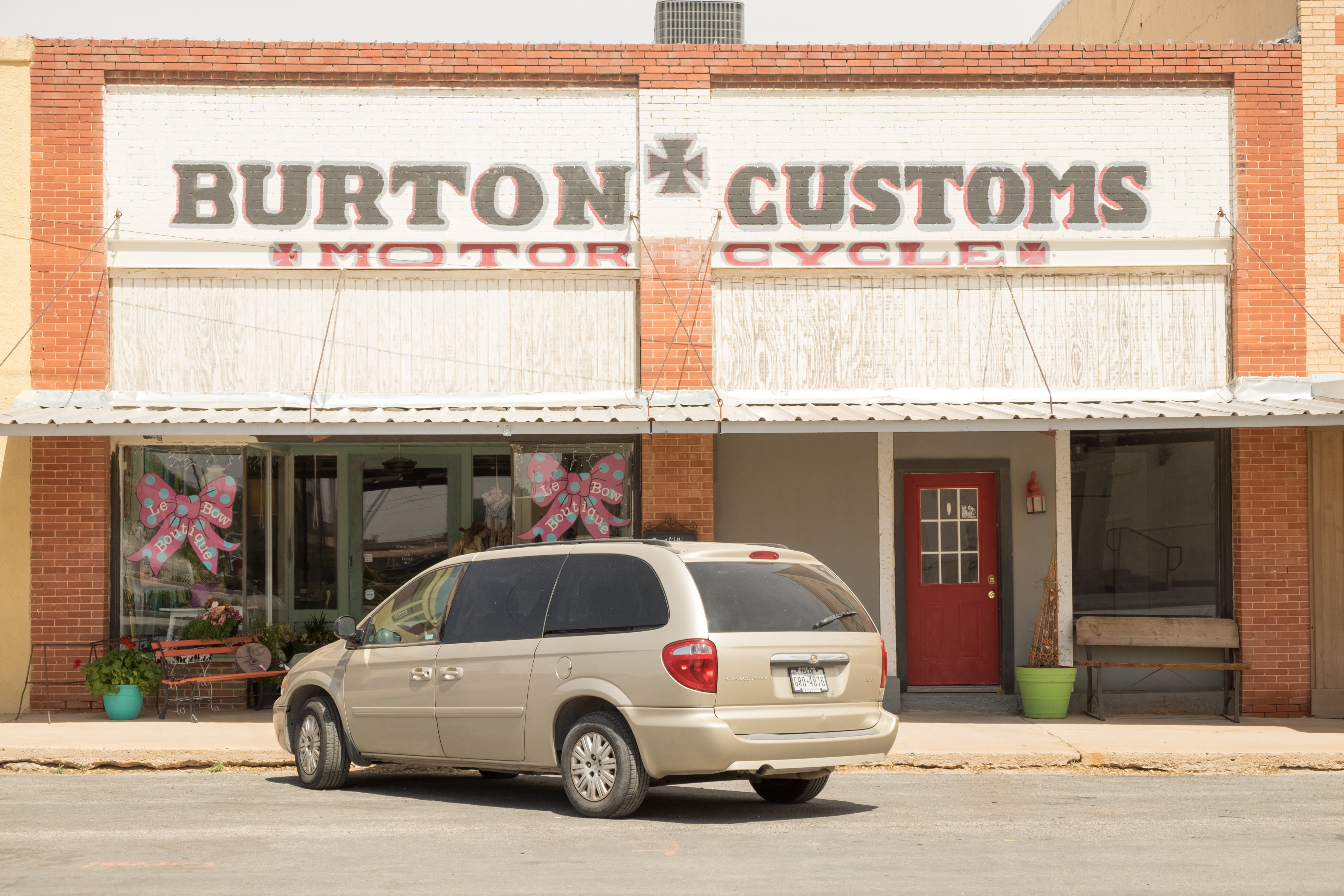
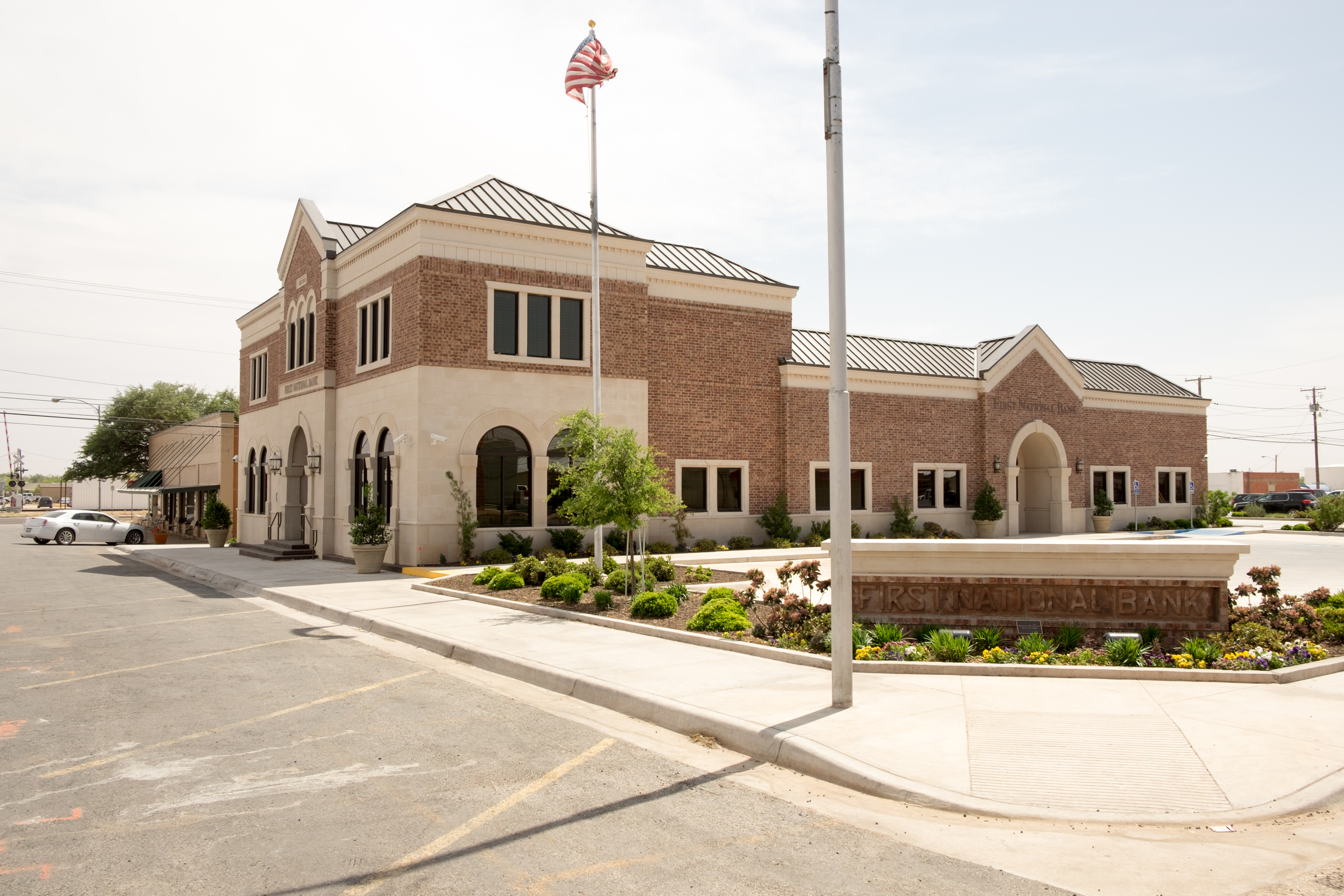
For once, getting back on Interstate 20, westbound to Midland, was (initially) a relief. It did not take long to realize that Interstate traffic with whipping winds and dust was not a huge improvement over the Dust Bowl two-laner from Lamesa to Stanton. At 21 miles, it was at least shorter.
Downtown Midland actually looked like a city, though with a massive construction project in the middle of it, it wasn’t so easy to see much of it. I did make it to the courthouse, though…
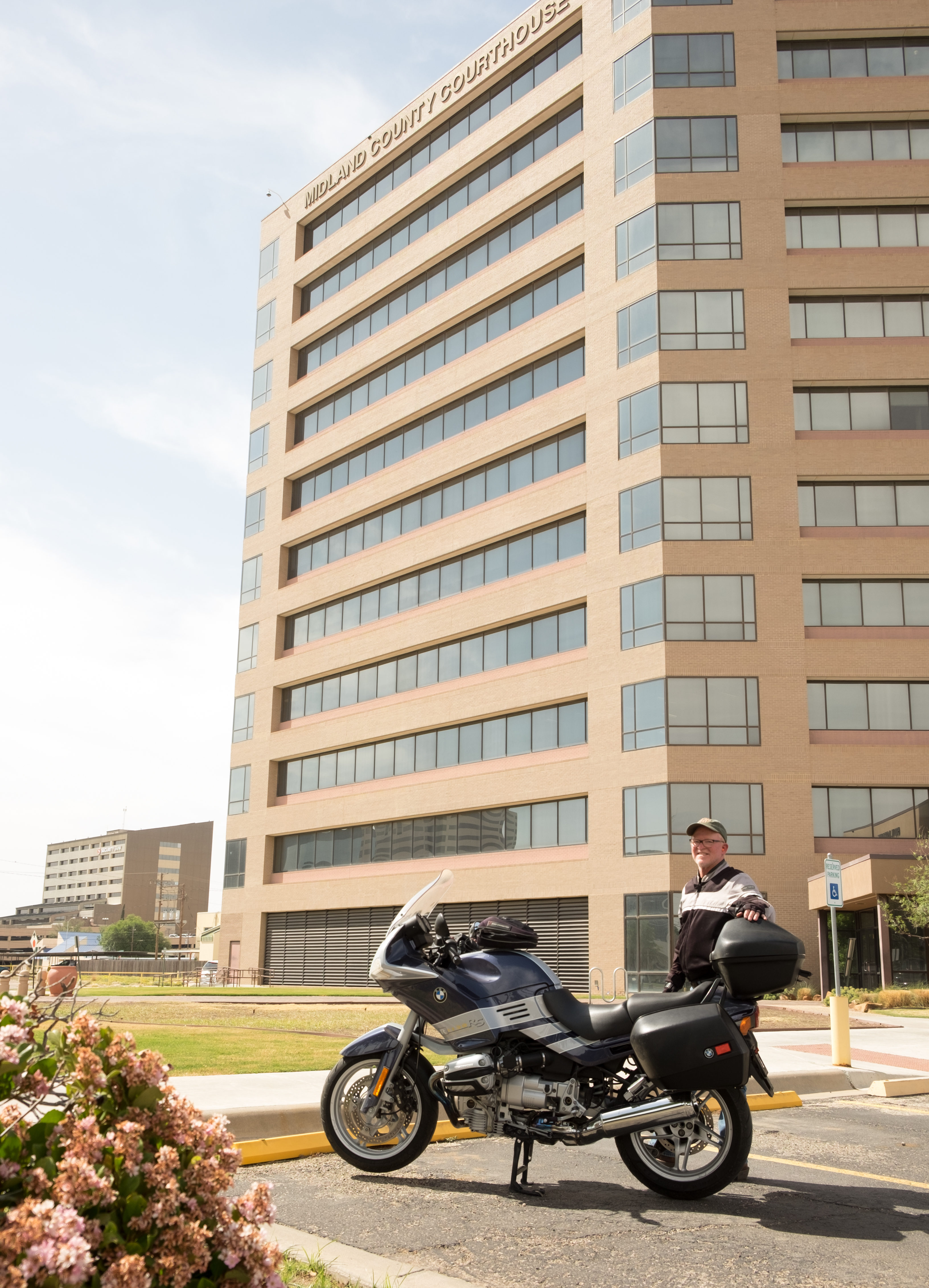
The way out of Midland led past a group of restored homes, including this lovely one:
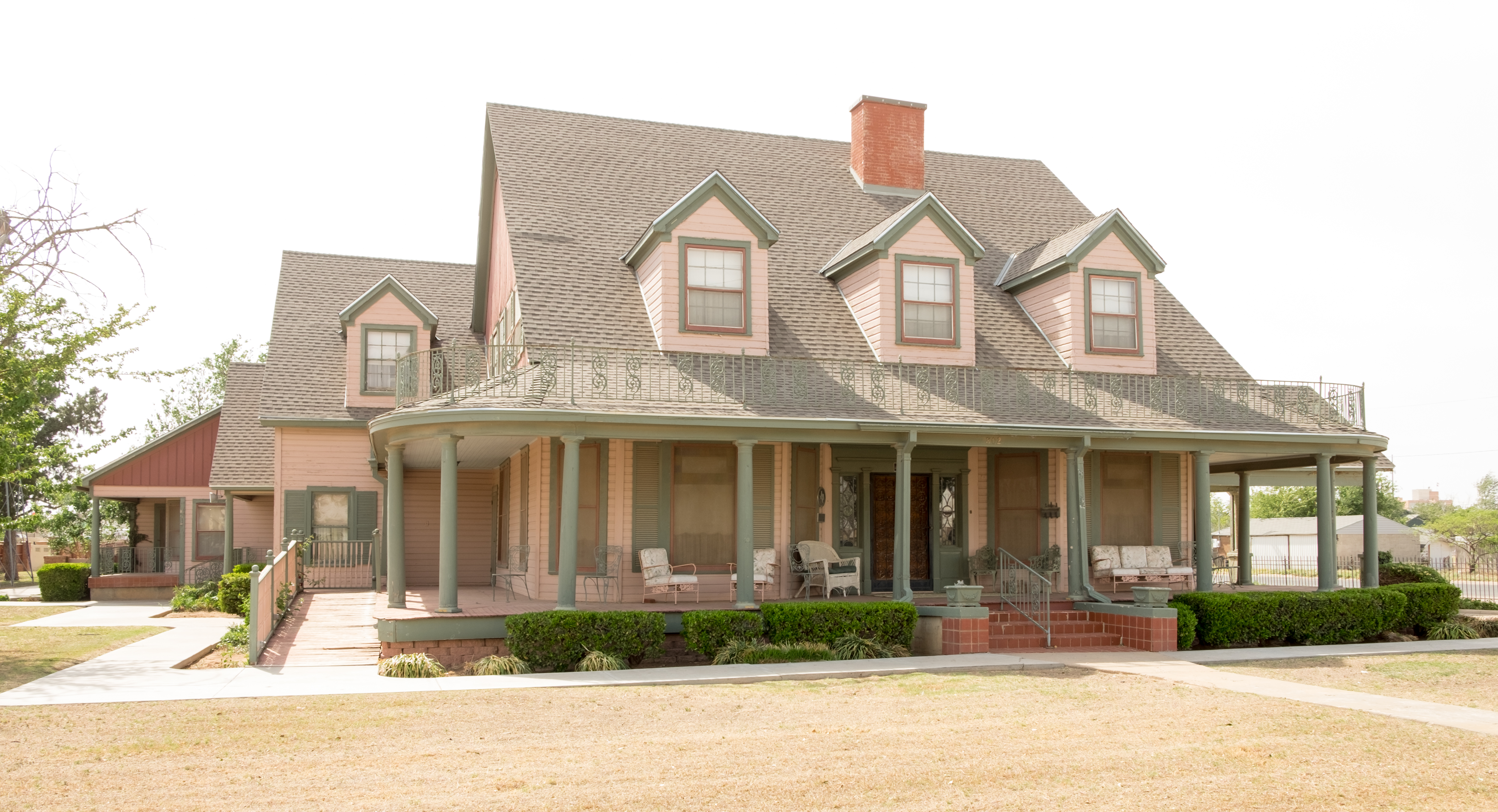
U-turn and head back eastward to Garden City, seat of Glasscock County.
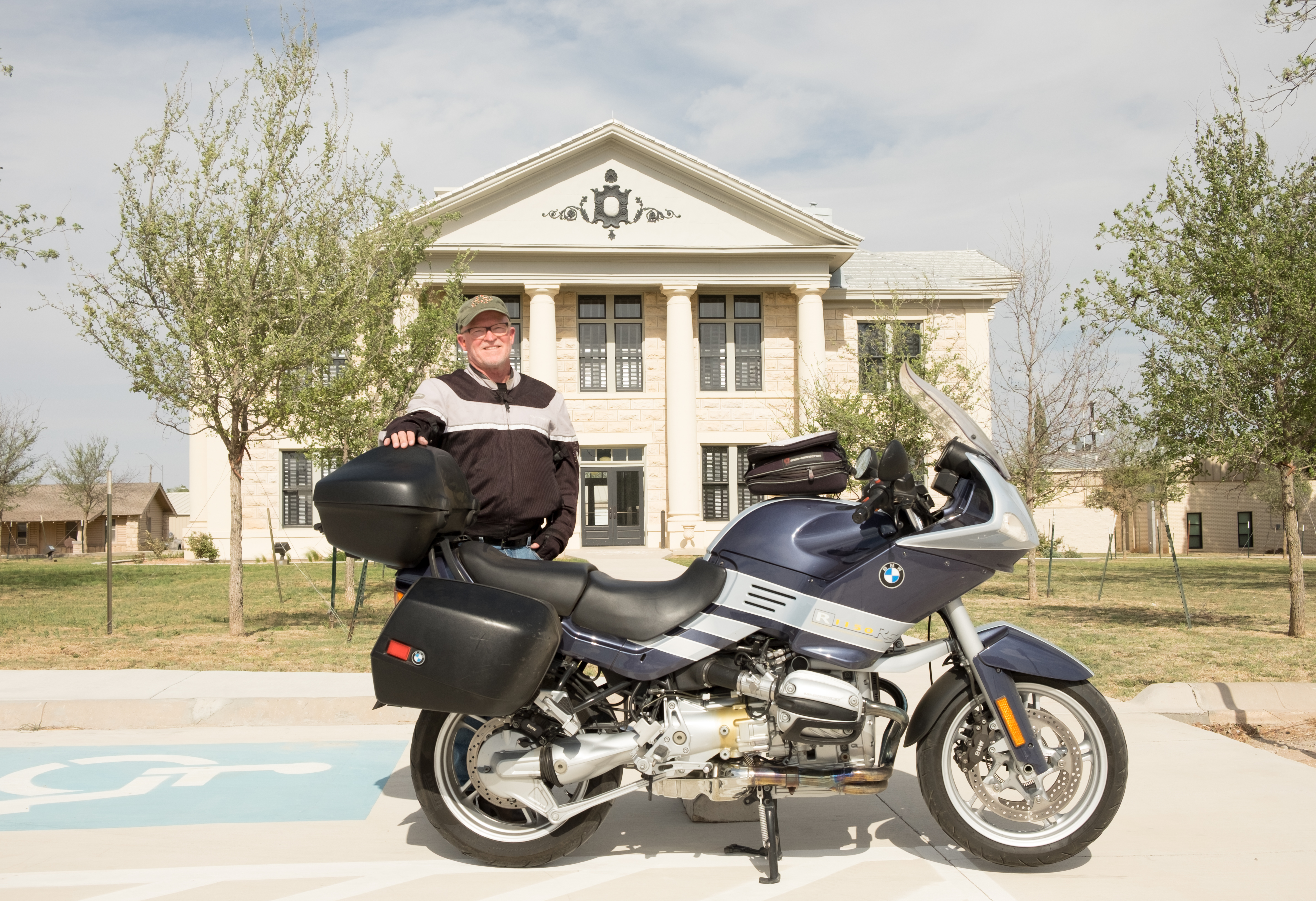
This little courthouse felt like a forlorn “Little House on the Praire”.
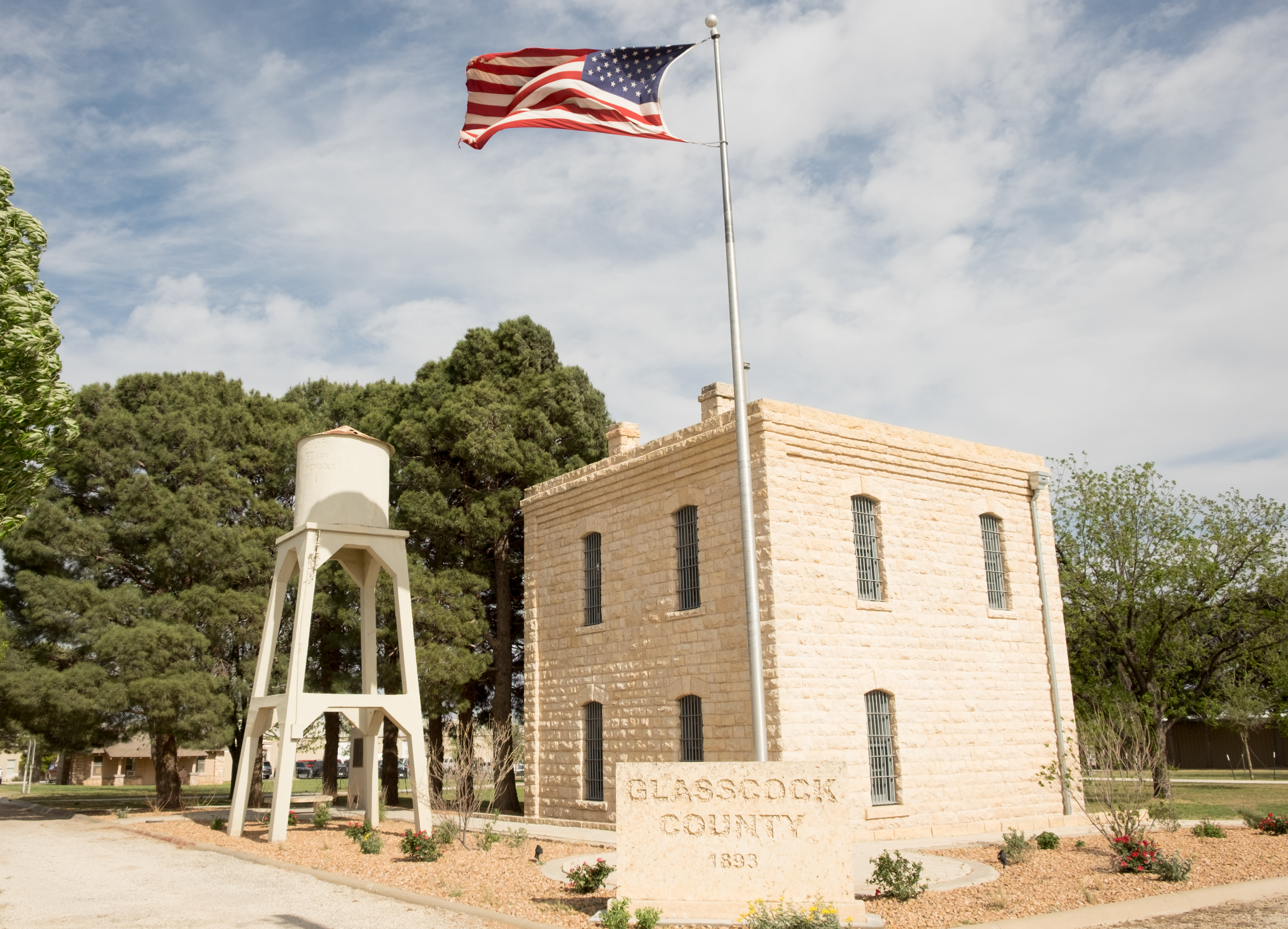
Kept heading east to Sterling City, seat of Sterling County. This area was once inhabited by Comanche, Kickapoo, Lipan Apache, Kiowa, and Wichita tribes. Frank and Jesse James also kept their horses in this area. There’s a very interesting landscaping feature in the shape of Texas in front of the courthouse:
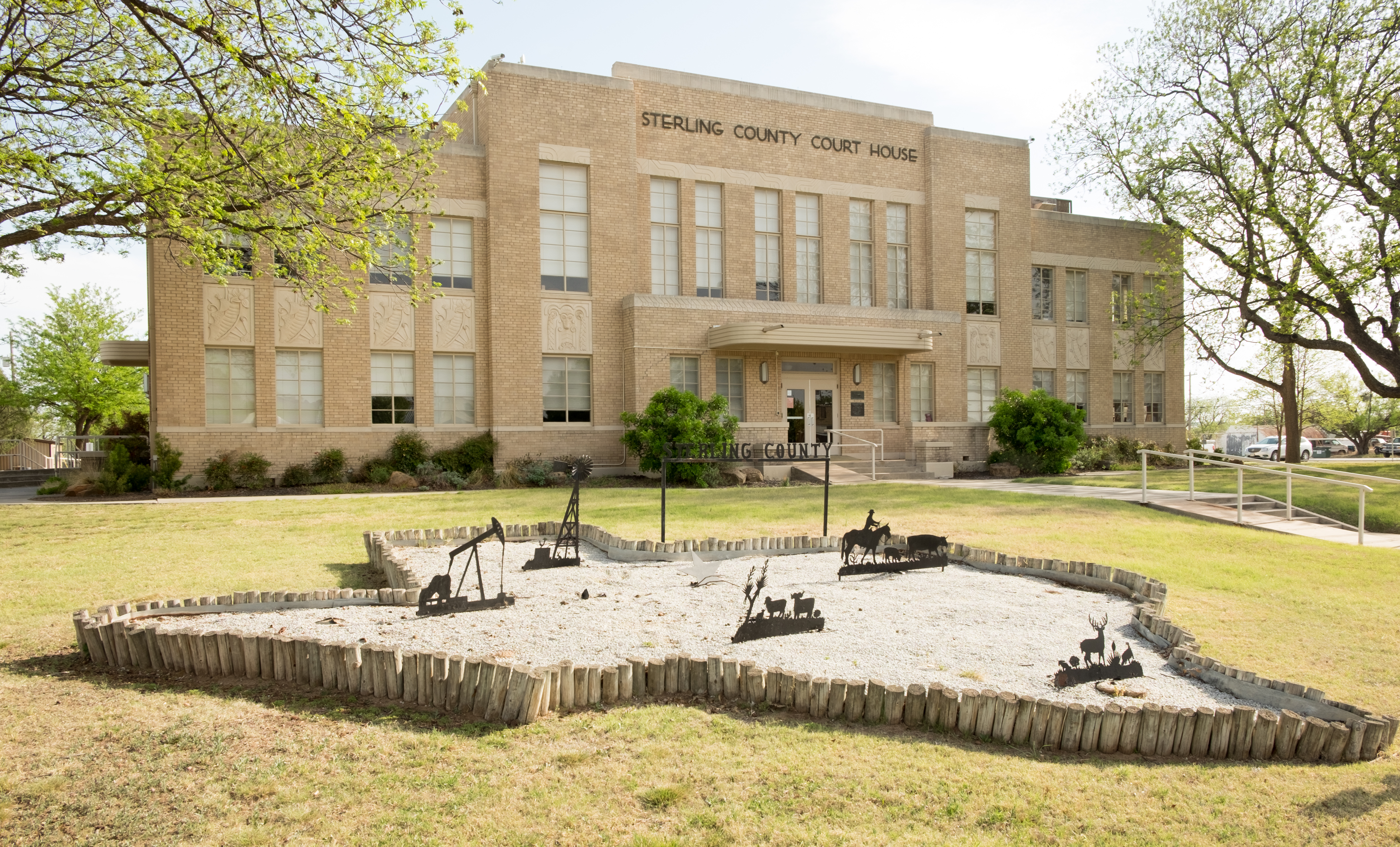
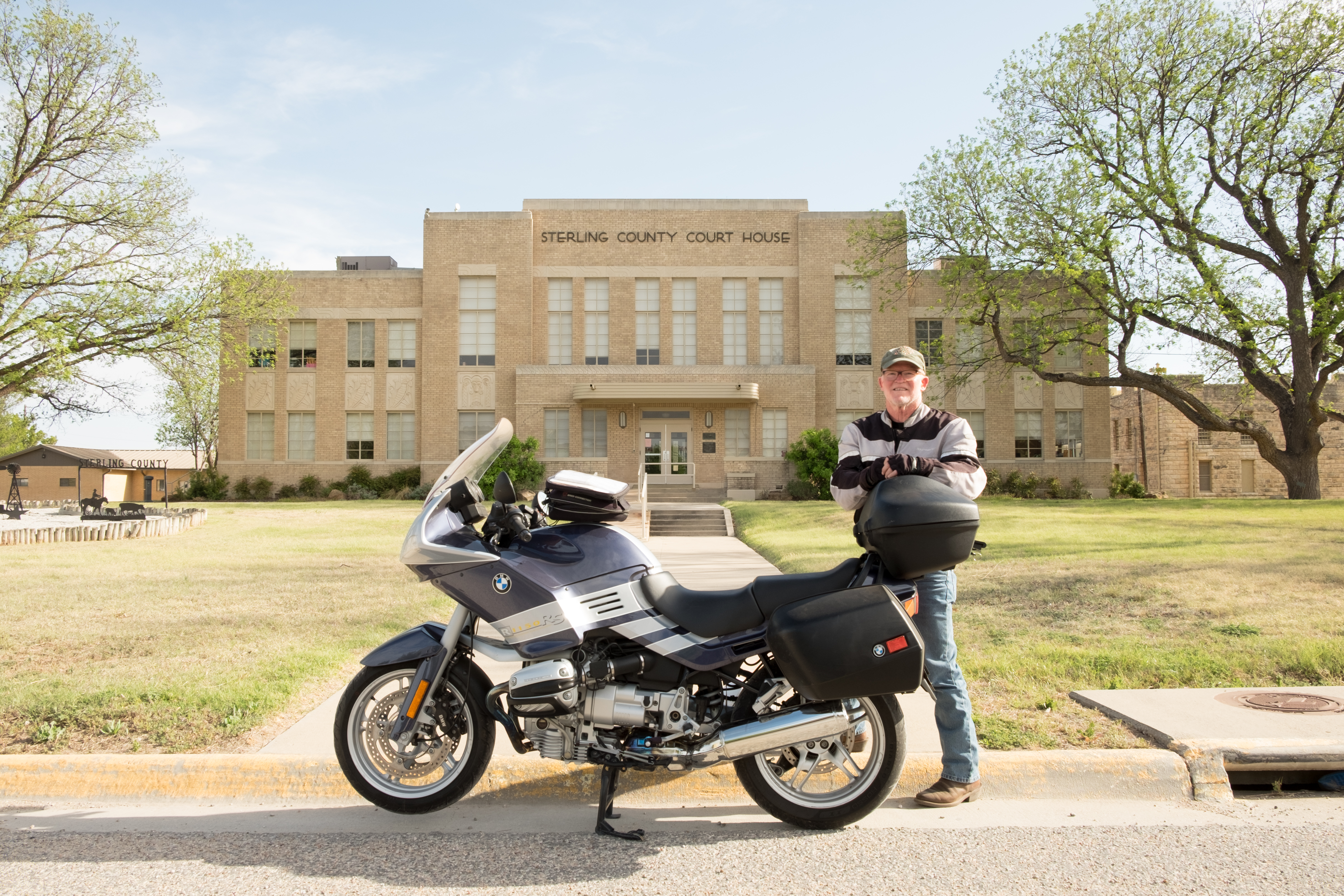
Tuckered out, I pointed the BMW northward again, heading for Big Spring, last stop of a long day, though short in comparison with the previous one – only 372 miles, but that included a delay in the morning for tire repairs. I made it to Big Spring with the tire still intact!
And the drive up from Sterling City to Big Spring is beautifully scenic, and panoramic. Not a lot of curvature for the bike, but beautiful nonetheless, Texas at its “wide open spaces” best.
Big Spring itself is named for…you guessed it, a “big spring” that was a source of water both for Native Americans and, later, subsequent settlers, buffalo hunters, and soldiers. The latter group added “fire” to the “water”, and along with other settlements in this area, it became a wild and sinful place. Now it’s just sinful (I’m guessing…)
Jon Voight’s opening scenes in the Academy Award winner “Urban Cowboy” were filmed in Big Spring,
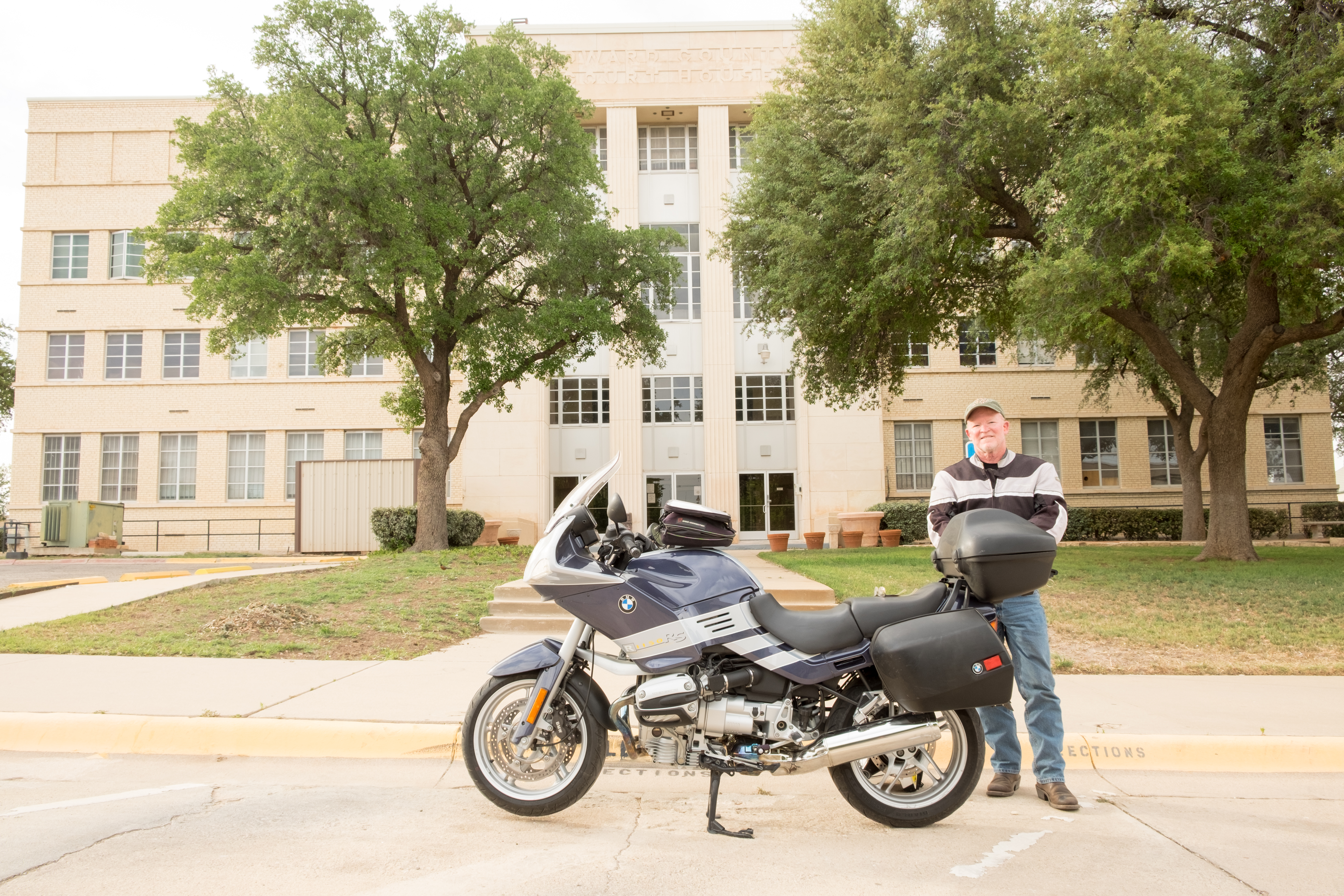
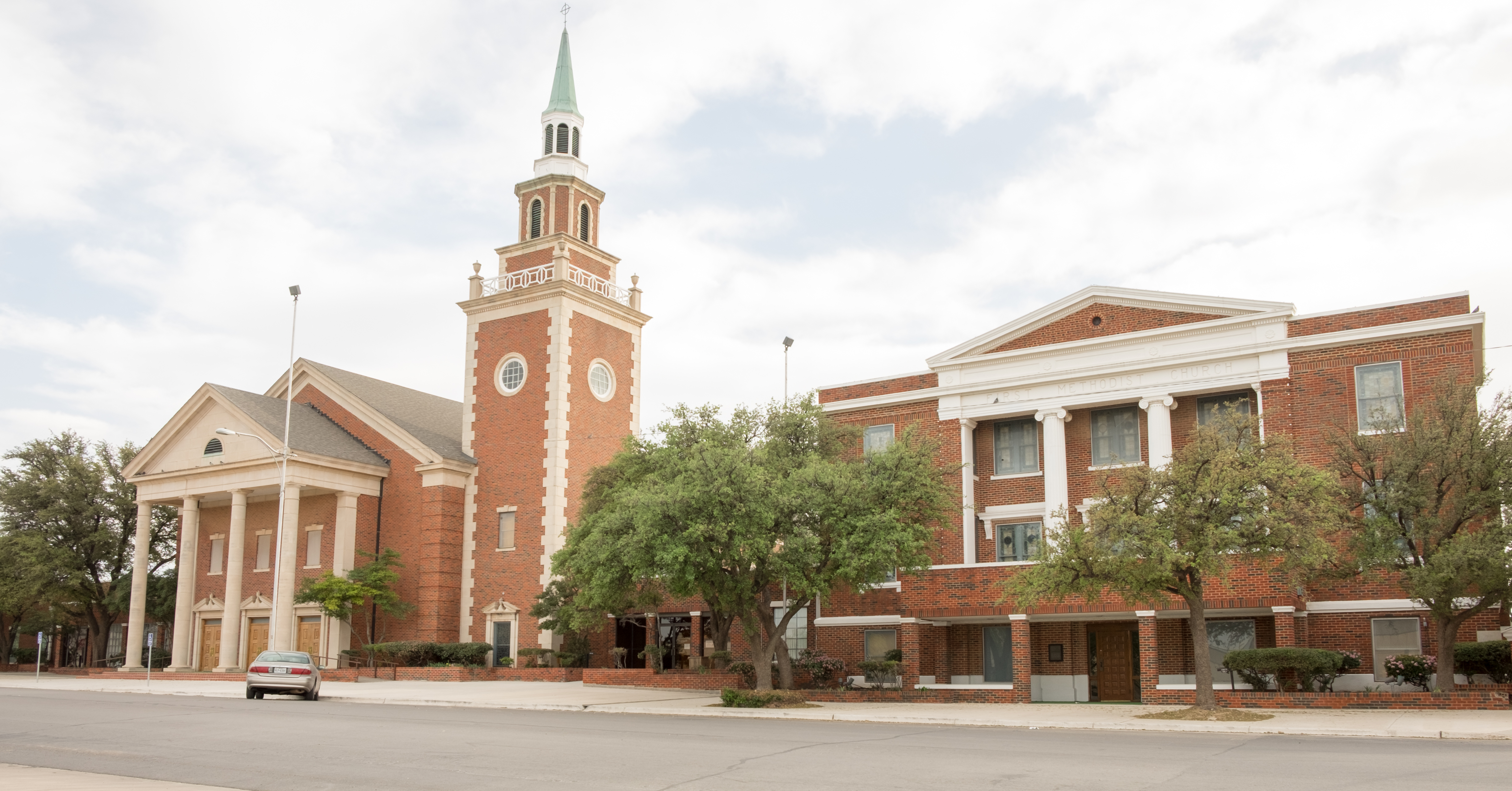
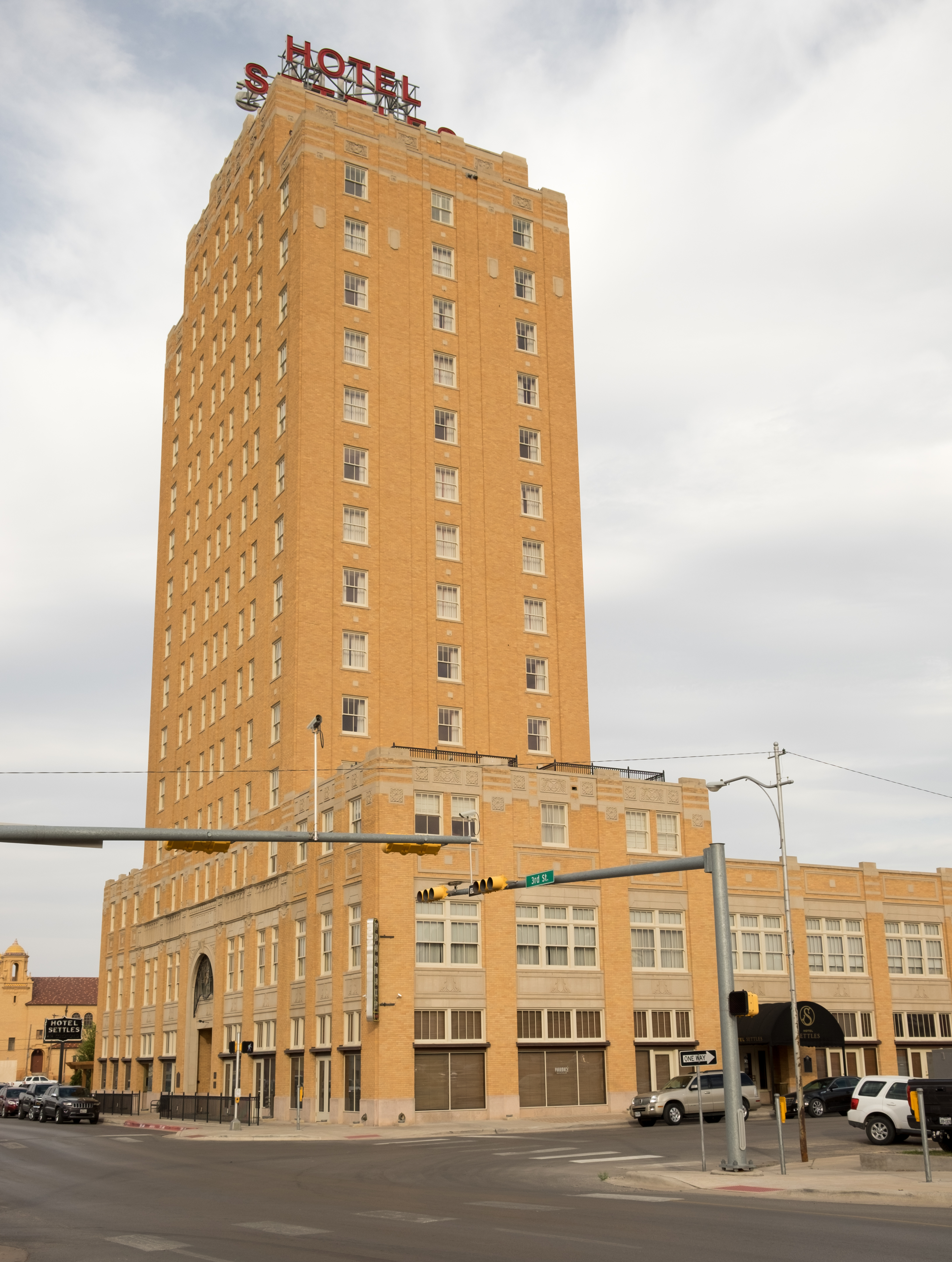
Hotel Settles, a classic that I’d have stayed in, but there was no room – oil field folk had it all.
I had a good Mexican dinner with several beers, saw a beautiful sunset though I could never find a vantage point from which to photograph it, and settled in for the evening.
